#gregory peck his first 10 years on film
Text
I humbly present my magnum opus, Gregory Peck 10 out of 10
#gregory peck#gregory peck his first 10 years on film#he also happens to be a 10/10#the stars aligned when i found this song#it goes roughly in chronological order though for editing purposes there is some move around#also can you guess what my favorite film is#old hollywood#gregory peck propaganda#my masterpiece#i cut this down i had so much footage
175 notes
·
View notes
Text
Fannish Year Review - 2023
thank you for the tag @thatfragilecapricorn30
1. Your main fandom of the year: for the first half of the year i was pretty obsessed with old hollywood (namely cary grant & gregory peck, as i'm sure people remember), but the x-files takes the cake overall.
2. Your favorite film this year: this question is always hard for me. i love movies so much and i'm always trying to watch new ones. even though this hasn't been a great movie year for me, i've still manage to rack up 115 films. i think i had a few favorites. x-files: fight the future was probably the most fun i've had watching a movie this year, if not ever. i was giddy for a week after that. barbie holds a special place in my heart because my friend group dressed up for it, and it was incredible to see all those women and girls in that theater all dressed in pink. i stumbled upon crossing delancey and return to me and they hold very special places in my heart now (i watched them after making big, scary college decisions and they helped ease every bit of anxiety. and hey, it did all work out all right in the end). watching the ballad of songbirds and snakes with the friends i've had since middle school--the very ones i read the original books alongside--was nothing short of euphoric.
3. Your favorite book this year: this year has been an excellent book year for me, so i'm going to cheat a little. the answer is most likely pet semetary by stephen king. it was such a moving story about the horrors of grief and who we become when we don't handle it the way we ought to, and it took my breath away when i read it. i'm still reeling from having read it. the ballad of songbirds and snakes holds a special place in my heart, too, because it sent me off on my hunger games kick and i got to read it with my friend group and co-workers (all who never really read). i don't read y.a. or much dystopian fiction, but those books really made me want to read more. they hold up just as well as they did when i was young, if not more because i feel them more deeply now than i ever could before. there was also heartbreakingly good reads such as trespasses by louise kennedy, kindred by octavia butler, and the overstory by richard powers - all books that helped me remember the power of storytelling and the importance of humanity.
4. Your favorite album or song this year: fade into you by mazzy star
5. Your favorite tv shows this year: the x-files, northern exposure, true detective, sex and the city
6. Your favorite tumblr community this year: the x-files one, but i too love my pedro girlies <33333
7. Your best new fandom discovery of the year: finding all the old x-files fanfic and the old x files fanfic websites, and all those blogs who continue to share them.
8. Your biggest fandom disappointment of the year: i might get shooters for this one but david duchovny's new movies were not my favorite and i really needed them to be (especially the pet semetary one)
9. Your tv/movie boyfriend and/or girlfriend of the year: mulder & scully, baby. i fear it'll never be anyone else for me. though i will mention coriolanus snow and lucy gray because they dared to tip the crown for a week or so (not because they were better but because they were so wrong and they took up so much of my thoughts lol)
10. Your biggest squeeze moment of the year: getting to celebrate the 30th anniversary of the x-files with both new and old x files lovers here on tumblr, getting a new hunger games movie and watching that with my friends, and undoubtedly watching pedro pascal rise to the fame he has now. i love that man more than words can ever express and all of his success is personal to me. i cannot wait to see the brilliant things he continues to do, and i'm so happy that this year was incredibly kind to him
tagging: @alwaysbethewest, @whatsnewalycat, @sweetly-yours-and-mine, @mando-abs, @thosewickedlovelies, @guiltypartys
2 notes
·
View notes
Text
Dean Stockwell, Reluctant Child Star By Raquel Stecher
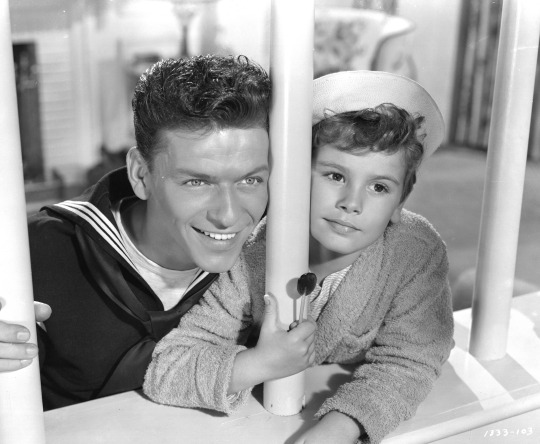
Born in Hollywood to a show business family, it seemed like Dean Stockwell was destined to become a movie star, but Stockwell stumbled into the industry simply by chance. In 1942, his mother Elizabeth “Betty” Stockwell, a vaudeville performer, and his father Harry, a stage singer best known for being the voice of the Prince in SNOW WHITE AND THE SEVEN DWARFS (’37), heard of a casting call for children. Dean and his older brother Guy auditioned for roles in a stage performance of The Innocent Voyage. Though only landing a small part with just two lines, it was all that was needed to catch the eye of an MGM talent scout. Before he knew it, the nine-year-old Stockwell had a seven-year contract with the studio. He was exactly what they were looking for. With his mop of curly hair and prominent pout, he gave off just the right combination of innocence and petulance that would make him a perfect fit to play orphans and spoiled rich kids in a variety of MGM productions.
Dean Stockwell was off to a roaring start with plum roles in big productions like ANCHOR’S AWEIGH (’45), THE GREEN YEARS (’46), GENTLEMAN’S AGREEMENT (’47) and SONG OF THE THIN MAN (’47). He held his own with big stars like Gregory Peck, Gene Kelly, William Powell, Myrna Loy, Greer Garson, Robert Ryan and Lionel Barrymore and other child stars Peggy Ann Garner, Darryl Hickman and Margaret O’Brien.
He was an incredible asset to MGM. Stockwell could be counted on to cry in front of the camera, sometimes coaxed by a director who encouraged him to imagine a dying pet. Even with that, Stockwell developed a reputation as an intelligent and sensitive young boy who needed little rehearsal and minimal direction. They called him “One-Take Stockwell.” In interviews years later, he recalled “I had photographic memory when I was a kid. I still can memorize lines very easily.” Stockwell was a natural and the parts just kept coming. When he wasn’t working for MGM on films, his home studio would loan him out to RKO, 20th Century-Fox and Universal.

But Being a child actor took a toll on Stockwell. The studio system could be cruel to child stars and Stockwell often bore the brunt of it. In an interview Stockwell said, “[as a] child star… I didn't have much privacy and I was working all the time. I couldn't be where I wanted to be; I couldn't play; so I needed to find anonymity, to just disappear.” He often worked 10-hour days six days a week, which included 3 hours of learning in the Little Red Schoolhouse on the MGM lot. He had to keep going for two reasons: 1.) his ironclad contract with MGM and 2.) a family to support, now that Betty was raising Dean and his brother as a single mom. Stockwell desperately wanted to be an average kid. He loved playing sports, dreamed of going to public school and loved spending time with his dogs, Thug and Thief. On the set of STARS IN MY CROWN (’50), he even declared to producer William Wright “I wish you’d fire me, so I wouldn’t have to work!”
During his seven-year contract with MGM, he made nearly 20 films for his home studio and others while on loan out. For the most part, Stockwell was miserable working as a child actor but there were two productions that he particularly loved. One was the anti-war drama THE BOY WITH THE GREEN HAIR (‘48) produced by RKO. In it, he plays a war orphan whose hair suddenly turns green, making him stand out from the locals. Stockwell identified with his character’s desire to fit in and the film’s pacifist message. When Howard Hughes tried to get him to deliver a pro-war statement, Stockwell stood up to the studio tycoon and refused. A few years later, he starred alongside Errol Flynn in KIM (’51), an adaptation of Rudyard Kipling’s classic story. Flynn became a father figure of sorts to young Stockwell and the two got on like a house on fire.
As Dean got older, he entered into what he called the “awkward age.” He later said, “[MGM] couldn't see how they were going to cast me now that I was turning 17. So they let me out of it and I just took off.” Dean finished high school, attended UC Berkeley and dropped out before finishing his first year. He didn’t know what he wanted but he did know he no longer wanted to be Dean Stockwell the child star. He donned a new identity, Rudy Stocker, and lived in anonymity as a day laborer. He made his way back to acting after a few years. Had it not been for his escape from Hollywood, a time period Stockwell referred to as “an education in living”, as well as the support of his mother, he might have gone down the wrong path as other child actors have done. Instead Dean Stockwell made an excellent comeback in the Leopold and Lobb inspired murder drama COMPULSION (’59). Reflecting on his past, Stockwell said “I have to know if people want me – for myself.” He would make several comebacks throughout his acting career and he learned an important lesson from his days as a child actor: be true to yourself.
youtube
#Dean Stockwell#child stars#actors#old Hollywood#studio system#MGM#acting#TCM#Turner Classic Movies#Raquel Stecher
136 notes
·
View notes
Text
round up // MARCH + APRIL 21
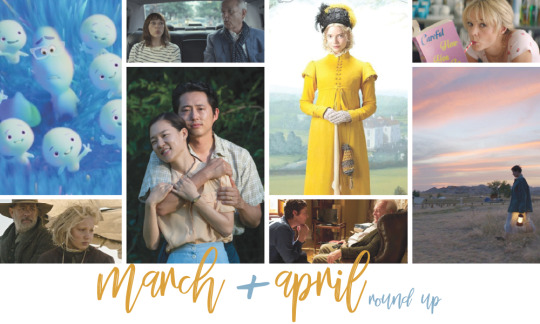
March and April were a whirlwind of vaccines and awards shows! A full year after we starting staying at home, the end of this weird chapter in recent history seems like it might finally be coming to a close, and this pop culture awards season—typically a time full of fun and glamour—captured our moment weirdly well. (Emphasis on the weird.) This month’s recommendations is filled with more Critic Picks than usual, so without further delay, let’s dive right in...
March + April Crowd-Pleasers
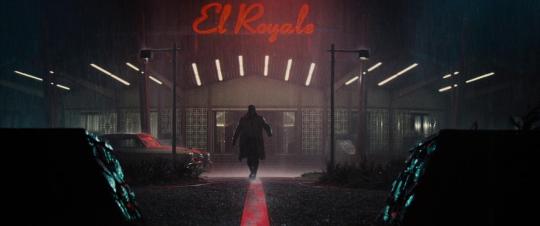
Double Feature — 2018 Action Thrillers: Bad Times at the El Royale + Den of Thieves
In Bad Times at the El Royale (Crowd: 9/10, // Critic: 8/10), Jeff Bridges, Cynthia Erivo, Jon Hamm, Chris Hemsworth, and Dakota Johnson are staying at a motel on the California-Nevada state line full of money, murder, and mystery. In Den of Thieves (Crowd: 9/10 // Critic: 6.5/10), Gerard Butler takes on some of the best bank robbers in the world. Whether you like your action with a dose of mystery or the thrills of plot twists, these will fit the bill.
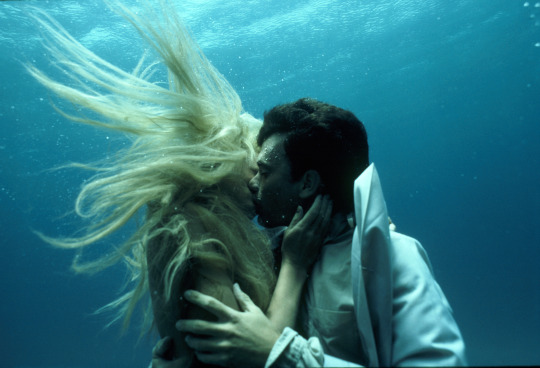
Double Feature — ‘80s Comedies: Caddyshack (1980) + Splash (1984)
In the mood for pure silliness? Take your pick between a mermaid and a gopher! Five years before The Little Mermaid, Tom Hanks fell for Daryl Hannah’s blonde hair and scaly tail, and John Candy was his goofy brother in Splash (Crowd: 8.5/10 // Critic: 7/10). And four years before Ghostbusters, Bill Murray was the goof on a golf course full of funny people like Chevy Chase, Rodney Dangerfield, and Ted Knight in Caddyshack (Crowd: 8.5/10 // Critic: 6.5/10).
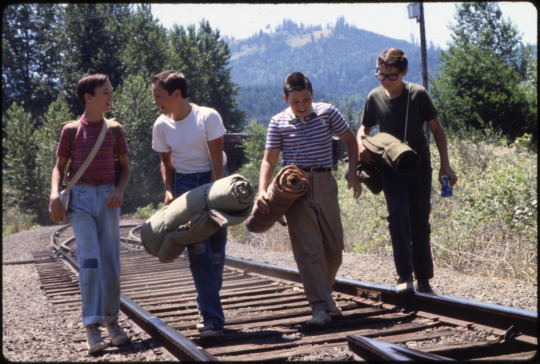
Double Feature — 1980s Coming-of-Age Films Starring Corey Feldman, Kiefer Sutherland, and Challenging Brother Relationships That Influenced Stranger Things: Stand by Me (1986) + The Lost Boys (1987)
Believe it or not, I had no idea these two ‘80s classics had so much in common when I chose to watch them back-to-back. In Rob Reiner’s adaptation of Stephen King’s Stand by Me (Crowd: 9/10 // Critic: 9/10), four kids (Feldman, Jerry O’Connell, River Phoenix, and Wil Wheaton) are following train tracks to find a missing body. In The Lost Boys (Crowd: 8.5/10 // Critic: 7/10), Corey Haim and Jason Patric move to a small California town and discover it’s full of ‘80s movie star cameos and…vampires? One is a thoughtful coming-of-age story and one is just bonkers, but both are a great time.

Spaceman by Nick Jonas (2021)
My love for the Jonas Brothers is well-documented, so instead of going down the rabbit hole I started digging at 15, I’ll talk about how Nick Jonas’s latest solo album will likely appeal to a wider audience than just the fans of the brothers’ bombastic pop records. It’s full of catchy tunes you’ll play on repeat and an R&B-influenced album experience about the loneliness we’ve experienced in the last year and how we try to make long-term relationships work.

Ted Lasso (2020- )
I love stories about nice people crushing cruelty and cynicism with relentless kindness, and Ted Lasso (Jason Sudeikis) is the warmest, most dedicated leader this side of Leslie Knope. Be sure to catch up on these witty and sweet 10 episodes before season 2 drops later this summer.
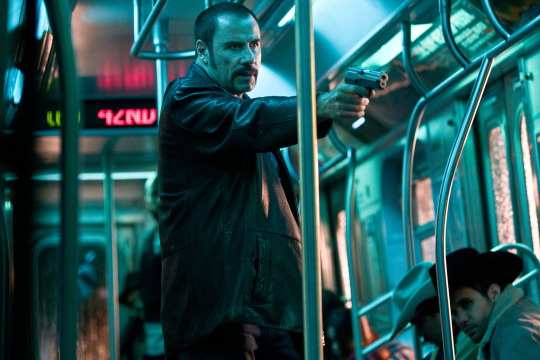
Double Feature — Tony Scott Action Flicks: Enemy of the State (1998) + The Taking of Pelham 123 (2009)
Tony Scott’s movies have got explosions and excitement in spades. I love a good man-on-the-run movie, and in Enemy of the State (Crowd: 9/10 // Critic: 8/10), Will Smith is running through the streets of D.C. after getting evidence of a politician’s (Jon Voight) part in a murder. I also love a tense story set in a confined space, which is what Denzel Washington is dealing with in The Taking of Pelham 123 (Crowd: 9.5/10 // Critic: 7/10) after a hammy John Travolta takes a New York subway train hostage.
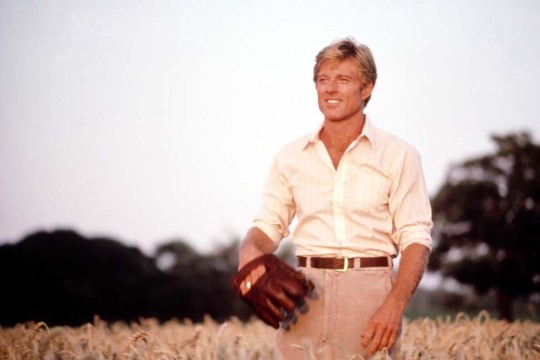
Double Feature — Baseball Movies: The Natural (1984) + Trouble With the Curve (2012)
Sue me—I love baseball movies. Robert Redford plays a fictional all-time great in the early days of the MLB in The Natural (Crowd: 8.5/10 // Critic: 9/10), and Clint Eastwood plays a fictional all-time great scout in his late career in Trouble With the Curve (Crowd: 8/10 // Critic: 7.5/10). If you love baseball or actors like Amy Adams, Glenn Close, Robert Duvall, and Justin Timberlake, these movies are just right here waiting for you.
youtube
Nate Bargatze: The Greatest Average American (2021)
Sue me—I enjoy Netflix standup comedy specials that are safe enough to watch with your whole family. That’s exactly the crowd I laughed with over Easter weekend, and while the trailer captures Bargatze’s relaxed vibe, it doesn’t capture how funny he really is.
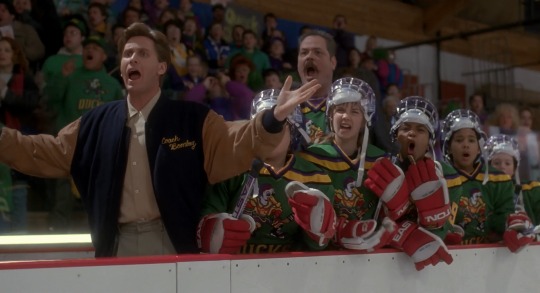
The Mighty Ducks (1992)
I thought somewhere in my childhood I’d seen at least one of The Mighty Ducks movies, but after watching all three, I think my memories must’ve come from previews on the VHS tapes for other Disney movies I watched over and over again. The original still holds up as an grown-ups, which is why even my parents got sucked in to this family movie while just passing through the living room. Bonus for ‘80s movies lovers: Emilio Estevez is basically continuing Andrew Clark’s story from The Breakfast Club as an adult. Crowd: 8.5/10 // Critic: 6.5/10

Double Feature — New, Dumb Action on Streaming: Godzilla vs. Kong + Thunder Force (2021)
If you want something intelligent, go ahead and skip to the next recommendation, but if you’re looking for something stupid fun, these are ready for you on HBO Max and Netflix. Thunder Force (Crowd: 8.5/10 // Critic: 6/10) follows Melissa McCarthy and Octavia Spencer as they train to become superheroes who take on superhuman sociopaths wreaking havoc on Chicago, and alongside Jason Bateman, they do it with a lot of laughs. Godzilla vs. Kong (Crowd: 9.5/10 // Critic: 5/10) is, um, exactly what it sounds like, so I’ll skip a plot summary and just say it’s exactly what you want from this kind of movie. #TeamKong

3:10 to Yuma (2007)
All you need to know is Russell Crowe is an outlaw, and Christian Bale is the guy who’s got to get him on the train to prison. I also watched the 1957 version, which is also a solid watch if you love classic Westerns. Crowd: 9/10 // Critic: 8/10
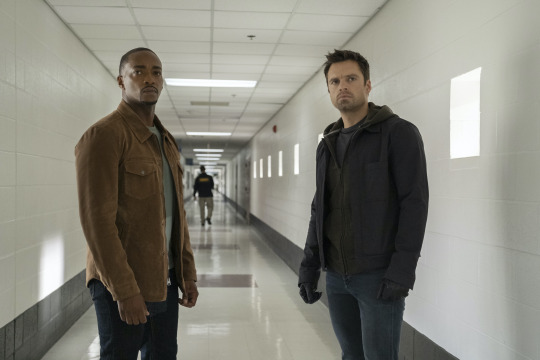
Falcon and the Winter Soldier (2021)
Marvel’s newest series isn’t nearly as inventive as WandaVision, and it may not land every beat, but it’s worth a watch for the fun new gadgets, Sebastian Stan’s dry joke delivery, and its exploration into themes of what makes a hero and what governments owe their citizens. It’s a pretty satisfying entry in the MCU canon, but I’d also recommend re-watching Captain America: Winter Soldier and Civil War—the canon is getting expansive, and it’s getting trickier every year to keep up with all the backstory.
March + April Critic Picks
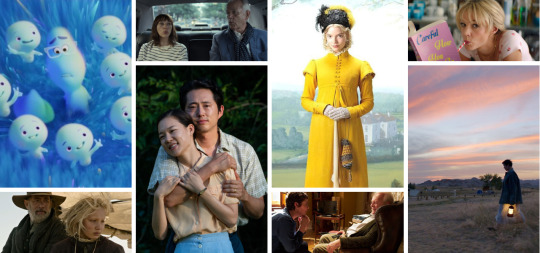
Best of 2020 Picks
As per usual, the months leading up to the Oscars becomes a binge period for potential Oscar nominees. In March and April, I watched many of the films that made my Top 20 of 2020, including Boys State, The Father, Judas and the Black Messiah, Let Them All Talk, Minari, Nomadland, On the Rocks, One Night in Miami…, Promising Young Woman, Soul, and Sound of Metal. You can read how I ranked them on my list for ZekeFilm, plus reviews of The Father, Minari, Promising Young Woman, and Soul.
Bonus: If you loved On the Rocks, don’t miss this feature and beautiful photography starring Sofia Coppola, Kirsten Dunst, Elle Fanning, and Rashida Jones for W Magazine.

Stranger Than Fiction (2006)
What would you do if you started hearing a voice who narrated your every thought and move? If you’re Will Ferrell, you’ll seek out a literary professor (Dustin Hoffman), fall in love (with Maggie Gyllenhaal), and track down the voice (Emma Thompson) who’s making ominous predictions about your future. Stranger Than Fiction is funny thought-provoking, and an unusual but welcome role for Ferrell. Crowd: 9.5/10 // Critic: 9/10
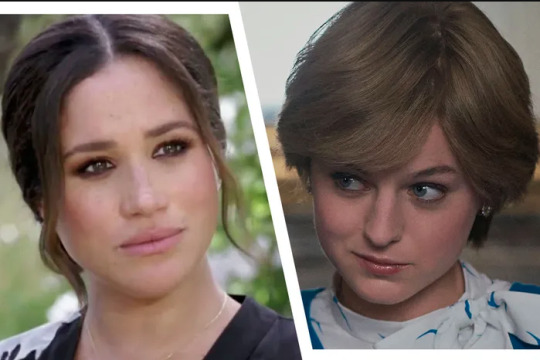
All the Royal Family News
Speaking of stranger than fiction, it’s been a busy few months for the Royal Family. We’ve celebrated 95th birthday of Queen Elizabeth, the 3rd birthday of Prince Louis, and the 10th anniversary of Will and Kate’s marriage. We also lost Prince Philip, and we watched the drama of Harry and Meaghan’s interview with Oprah. No matter what happens to their Crown, I don’t think we’ll ever get over our fascination with the Windsor family. A few pieces worth reading from the last few months:
“In Meghan and Harry’s Interview, Two TV Worlds Collided,” Vulture.com
“The Queen’s Man: Philip, Duke of Edinburgh, Dies,” TIME.com
“Obituary: HRH The Prince Philip, Duke of Edinburgh,” BBC.com

Goodfellas (1990)
One of my film opinions that makes me feel like a phony is that Martin Scorsese just isn’t my cup of tea. He’s brilliant, but his films tend to be long and dark, two qualities that are never my first choice…and somehow Goodfellas still worked for me? Maybe it was the TV edit graciously toning down the violence or maybe it was that Ray Liotta and Joe Pesci were firing on all cylinders, but for some reason this ‘90s classic didn’t suck the joy out of my evening like Scorsese often does. (Bonus: For a Martin Scorsese/Robert De Niro I don’t really recommend, head to the last section of this Round Up.)
youtube
Fearless (Taylor’s Version) (2021)
Her voice has only matured, so Taylor Swift revisiting her old albums is like upgrading a blast to the past. Plus, the six new tracks make me feel like 15 crushing on that boy in Spanish class again, and her Grammys performance (just before her third Album of the Year win) was magical and folklore-tastic.

Double Feature — ‘60s Action Classics: The Guns of Navarone (1961) + Planet of the Apes (1968)
The Guns of Navarone (Crowd: 8/10 // Critic: 8.5/10) follows Gregory Peck and David Niven as they destroy Nazi weapons in the Mediterranean. Planet of the Apes (Crowd: 8/10 // Critic: 8.5/10) follows Charlton Heston as he attempts to escape from, well, a planet full of apes. The pacing of ‘60s films doesn’t always hold up, but that’s not the case with this pair. Both are still full of suspense, and you can’t go wrong hanging with casts like these.
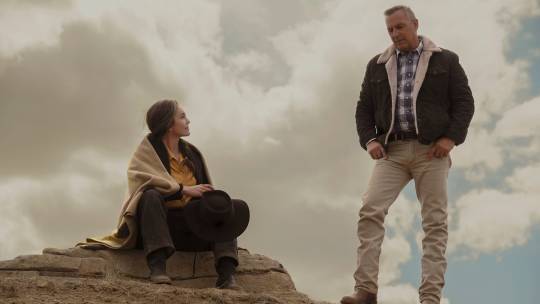
Let Him Go (2020)
Kevin Costner and Diane Lane play a farming couple who unexpectedly help raise a boy who lost his biological father—sound familiar? But instead of a superhero origin story, they’re part of a thrilling Western with performances nuanced (Costner and Lane) and showy (Lesley Manville). If I’d watched this before completing my Best of 2020 piece, it likely would’ve been on my list. Crowd: 8/10 // Critic: 8.5/10
youtube
The Oscars
I’m a ride-or-die fan of the Academy Awards, but I’ll admit even I found this year’s ceremony odd. Instead of focusing on what wasn’t so hot, I’ll recommend a few moments you don’t want to miss:
Emerald Fennell giving a shout-out to Saved by the Bell
Daniel Kaluuya acknowledging his parents’ sex life during his acceptance speech (??)
Yuh-Jung Yoon flirting with Brad Pitt and acknowledging she’s just “luckier” than her fellow nominees
Glenn Close dancing to…”Da Butt”?
You can also read about the historic wins and nominations from this year’s Oscar class and why the Golden Globes were an even stranger production weeks earlier.
youtube
Trailer-palooza!
Movies are on their way back, y’all! I’m counting down the days until I can get back to a theatre, and even if some of these movies are duds, I’m planning to see all of them on a big screen if possible:
Those Who Wish Me Dead (May 14)
Cruella (May 28)
In the Heights (June 11)
Space Jam 2 (July 16)
Shang-Chi and the Legend of the Ten Rings (September 3)
West Side Story (December 10)
Also in March + April…
To add to the Oscars love, you can listen to a conversation about what we learn about family, community, and society in some of the year’s biggest nominees on the Uncommon Voices podcast. I join regular hosts Michael and Kenneth in this episode, and I recommend all of their thoughtful discussions on their “What’s Streaming” episodes.
I’ve previously recommended the Do You Like Apples weekly newsletter, so I’m proud to share I contributed twice in March! I wrote about Love and Basketball, directed by Gina Prince-Bythewood, and one of my all-time favorite Julia Roberts rom-coms, Notting Hill. (I also tied to win their Oscars pool, but I suppose that’s less exciting for you than me.)
It was a busy couple of months on SO IT’S A SHOW! New logo, new email list, new Instagram, and a host of new episodes about a flop of a Madonna flick, a Swedish children’s TV show, an urban legend turned into a horror movie, one of the best films about journalism ever, and a Martin Scorsese movie about a real boxer.
Most of what I wrote for ZekeFilm in March and April was mentioned in Best of 2020 recommendations…except for The Nest, a film that couldn’t figure out what genre it wanted to be.
Photo credits: Nick Jonas, Royal Family. All others IMDb.com.
#Round Up#Bad Times at the El Royale#Den of Thieves#Caddyshack#Splash#Stand by Me#The Lost Boys#Spaceman#Nick Jonas#Ted Lasso#Enemy of the State#The Taking of Pelham 123#The Natural#Trouble With the Curve#Nate Bargtze#Nate Bargatze: The Greatest Average American#The Mighty Ducks#Godzilla vs. Kong#Thunder Force#3:10 to Yuma#Falcon and the Winter Soldier#Stranger Than Fiction#The Royal Family#Meaghan Markle#Prince Harry#Goodfellas#Fearless#taylor swift#Fearless (Taylor's Version)#The Guns of Navarone
13 notes
·
View notes
Photo
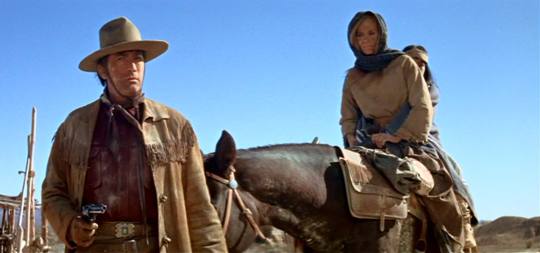
The Stalking Moon (1968)
By the late 1960s, the American Western’s zenith had passed, and the genre was reinventing itself. Bonnie and Clyde (1967) unleashed a wave of films in all genres depicting violence more openly and graphically; meanwhile, the rise of the Revisionist Western (1962’s Ride the High Country, 1966’s The Professionals) led to the deglamorization of the genre’s protagonists and their sense of morality. Released by National General Pictures (NGC), The Stalking Moon reunites producer Alan J. Pakula, director Robert Mulligan, and Gregory Peck – no longer a dashing young man – a six years after To Kill a Mockingbird (1962). Though the team is a throwback, the mindset of The Stalking Moon fits squarely within a Revisionist Western. Mulligan’s dialogue-light film incorporates elements of atmospheric thrillers and, in its tensest moments, seems to resemble a proto-slasher. As a hybrid thriller-Western, The Stalking Moon – once the narrative pieces are in place – is a sharp-edged, gorgeously-shot affair.
On Sam Varner’s (Peck) last day before retiring from the U.S. Cavalry, his regiment surrounds and arrests dozens of Apache warriors. Among the group is a white woman, Sarah Carver (Eva Marie Saint), and her half-Indian son (Noland Clay; Clay’s ethnicity/race is unclear). That afternoon, Sarah pleads for an immediate escort from the Cavalry’s camp instead of waiting for five days for an official military escort. The boy’s father, Salvaje (Nathaniel Narcisco in redface; Narcisco’s ethnicity/race is unclear), is a ruthless assassin and, according to Sarah, almost certainly in pursuit of their son. The Cavalry commander rejects Sarah’s request, but Sam agrees to take them to a remote train station. At the station, disaster strikes, and Sam invites Sarah and her son to stay with him at his rugged, mountainous ranch in New Mexico. Sarah and her son find the personal adjustments to live on Sam’s ranch difficult, but they have help thanks to ranch hands Ned (Russell Thorson) and Nick Tana (Robert Foster, whose character is a half-Indian scout). But even in this ranch, protected on three sides by treacherous rock formations, Sarah and her son have not yet eluded the violence to come.
Mulligan also appears to make comments on how the United States treated the American Indians of the West, but ultimately never does so. The Stalking Moon never highlights indigenous perspectives, declining to even give Sarah’s son a name or expressive space. These perspectives only exist through implication – the wars of the American West are going poorly for the tribes, and white settlers are moving ceaselessly westward and are cementing themselves in these lands. Sarah and Salvaje’s child, being of mixed race and approximately eight or nine years old, would almost certainly be the target of sociopolitical discrimination and the suspicious gazes of many a stranger. Never discussed by any of the characters is the possibility of such behavior towards the child; if Mulligan and screenwriters Wendell Mayes (1959’s Anatomy of a Murder, 1972’s The Poseidon Adventure) and Alvin Sargent (1977’s Julia, 2004’s Spider-Man 2) attempted to insert subtext regarding the child’s treatment, they do so far too subtly.
Salvaje himself is a largely faceless antagonist who never exchanges any dialogue, let alone a grunt, a cry of pain, a primal exclamation. Like numerous American Western movies too numerous to name, this is a reinforcement of stereotypical depictions of American Indians in Hollywood – anonymous, without specific bearing to the lead characters. Is he pursuing his son to reclaim him or the murder him? The movie never says. To Salvaje’s credit, he is a physical menace that could easily overtake an aging Sam Varner. More often than not during the Western’s heyday, indigenous Americans – whether individually or as part of a collective – would be all too easily slaughtered in a hail of protagonists’ gunfire or explosives (in part because of their antagonistic anonymity). Such developments would serve The Stalking Moon, which is partly a thriller, poorly. Thus, Salvaje is an aversion of the too-easily-killed Indian trope, but his complete lack of non-violent interaction with any character and empty characterization beyond his capacity for violence and vengeance uphold the trope of the anonymous indigenous menace. His physicality and obvious threat to the protagonists serve thriller genre; his nature as a blank slate killer is a legacy from American Western narrative traditions (and now largely a relic to that tradition’s contemporary practitioners).
Now in his 50s when he made The Stalking Moon, Gregory Peck – if only because of Hollywood’s obsession over age – was reaching a point in his career where opportunities for lead roles inevitably begin to decline (but not his influence, as Peck was currently serving as the President of the Academy of Motion Picture Arts and Sciences). The Stalking Moon will, on paper, appear to be typical material for Peck. His Sam Varner, when no one else will tend to Sarah and her son’s safety, will take the initiative even though this decision, at best, is an inconvenience or, at worst, might cost him his life. As it is so often with Peck, his screen presence – assuredness of posture, the timbre of his voice, and calming persona – engineers a great performance. Even with a screenplay that avoids providing dialogue-driven details about his character’s life, Peck makes Sam Varner another entry in his long filmography of upstanding heroes.
The screenplay also consigns Eva Marie Saint to playing her character as a trauma survivor whose apprehension is pervasive. If one is seeking a role where Saint is able to display the fullest breadth of her acting range, The Stalking Moon is certainly not that movie. But for how the screenplay portrays her character, this is a capable performance from Saint alongside child star Noland Clay as the boy (this film remains Clay’s only screen credit).
Cinematographer Charles Lang (1947’s The Ghost and Mrs. Muir, 1959’s Some Like It Hot) and editor Aaron Stell (1958’s Touch of Evil, To Kill a Mockingbird) pay lip service to the Western genre with luxurious takes of the mountains and rock formations that mark their landscape photography. With on-location filming in Red Rock Canyon and Valley of Fire State Park in Nevada, the low-to-the-ground, slightly upward-angled camera shots suggest that Sarah and her son, while making Sam Varner’s ranch house their new home, have nowhere to escape to. Dry shrubs line this small, sloped canyon with somewhat steep angles that make even walking without ascending or descending hazardous. Yet Lang and Stell’s collaboration truly impresses during the action setpieces – most notably in a scene where Gregory Peck, in a darkened room, awaits the entrance of the man who has been hunting the people he has been protecting. Before the naming and identification of the slasher subgenre of horror film, The Stalking Moon – noting its selective cinematography and editing in its tensest moments – relies on numerous lighting and staging techniques that the likes of The Texas Chainsaw Massacre (1974) and Friday the 13th (1980) would later adopt. Though shot and edited like a thriller, much of the film has scenes of people-watching: adults observing children, children observing adults, people noticing small behavioral details otherwise glossed over in a less patient movie. These moments of observation substitute for the dialogue and are as important as the most critical pieces of dialogue in the film.
youtube
An unconventional score from composer Fred Karlin (1970’s The Baby Maker, 1973’s Westworld) is a restrained effort, making use of a full orchestra but rarely employing the aural grandiosity that an orchestra is capable of. Repeated often throughout The Stalking Moon is the opening motif whistled in the main titles, with the sparse melodies – usually performed by the whistler or a limited number of woodwinds and/or brass – suggesting the vastness and emptiness of the American West, even in the days of westward expansion. Karlin’s music has an unsettling quality that permeates into The Stalking Moon’s most joyous scenes. When Sarah and her son arrive and Sam’s residence for the first time, the cue “Sarah’s New Home” opens with solo triangle before the entrance of a lone flute. The occasional dissonance from the triangle conflicts with the flute – a subliminal, harmonic message (in addition to the various string harmonics used throughout) that Sarah’s dangers have not passed. So often in modern film composing, a director will relegate the music as background noise or the composer themselves will dispense almost entirely of melody. In the latter, numerous modern film score composers have reasoned that melody cannot serve action films or thrillers, so they will compose a wall of amelodic texture instead. But, as Karlin so ably demonstrates in his score to The Stalking Moon, the juxtaposition of memorable melodies and effective action scoring is more interesting dramatically and musically.
Today, The Stalking Moon’s influence has been limited in part due to NGC’s dissolution and sale to Warner Bros. in 1974. For anyone willing to dive into this relatively undiscovered piece of American Western, few of the film’s immediate contemporaries adapted its thriller-influenced cues for their own purposes. Its depiction of American Indians is not as egregious as other Westerns and it appears to make some sort of attempt at commentary, but many of the damaging preconceptions of indigenous Americans make their way into the film’s screenplay. Yet considering the undemonstrative approach that Robert Mulligan takes for his film, The Stalking Moon is a serviceable Western torn between the passing of eras for the genre.
My rating: 7/10
^ Based on my personal imdb rating. Half-points are always rounded down. My interpretation of that ratings system can be found in the “Ratings system” page on my blog (as of July 1, 2020, tumblr is not permitting certain posts with links to appear on tag pages, so I cannot provide the URL).
For more of my reviews tagged “My Movie Odyssey”, check out the tag of the same name on my blog.
#The Stalking Moon#Robert Mulligan#Gregory Peck#Eva Marie Saint#Robert Forster#Noland Clay#Russell Thorson#Nathaniel Narcisco#Wendell Mayes#Alvin Sargent#Charles Lang#Aaron Stell#Fred Karlin#TCM#My Movie Odyssey
7 notes
·
View notes
Text
THE MAN WHO CAME TO DINNER
March 27, 1950
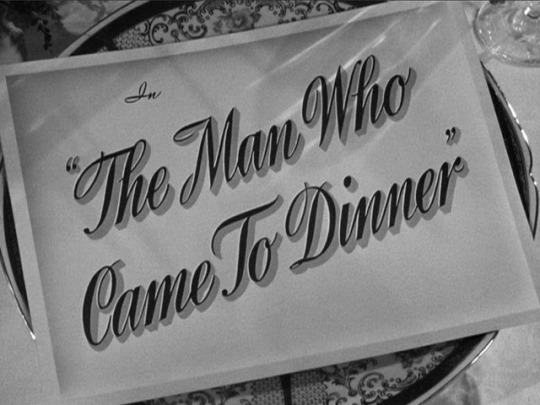
"The Man Who Came To Dinner” was a presentation of Lux Radio Theatre, broadcast on CBS Radio on March 27, 1950.

The Man Who Came to Dinner is a comedy in three by George S. Kaufman and Moss Hart. It debuted on October 16, 1939, at the Music Box Theatre in New York City, where it ran until 1941, closing after 739 performances. It then enjoyed a number of New York and London revivals.

The play was adapted for a 1942 feature film, scripted by Philip G. Epstein and Julius J. Epstein and directed by William Keighley. The film featured Monty Woolley, Bette Davis, Ann Sheridan, Billie Burke, Jimmy Durante, Mary Wickes and Richard Travis.
“The Man Who Came to Dinner” was previously presented on radio by Philip Morris Playhouse on July 10, 1942. Monty Woolley, who played the leading role in the film version, starred in the adaptation. It was broadcast again by Theatre Guild on the Air on ABC Radio November 17, 1946 starring Fred Allen. In 1949, “The Man Who Came to Dinner” was produced on “The Hotpoint Holiday Hour” starring Charles Boyer, Jack Benny, Gene Kelly, Gregory Peck, Dorothy McGuire, and Rosalind Russell.
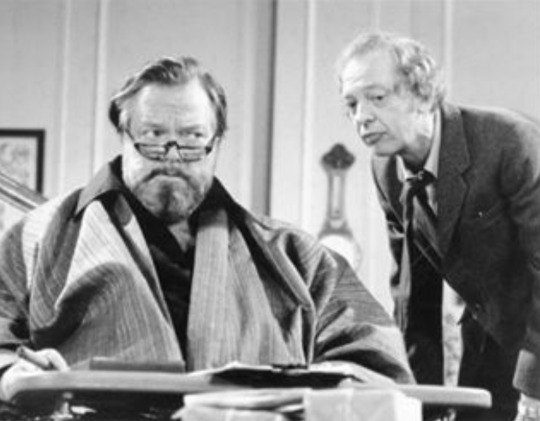
On October 13, 1954, a 60-minute adaptation was aired on the CBS Television series “The Best of Broadway.” A “Hallmark Hall of Fame” production was broadcast n November 29, 1972 starring Orson Welles, Lee Remick (Maggie Cutler), Joan Collins (Lorraine Sheldon), Don Knotts (Dr. Bradley), and Marty Feldman (Banjo). The 2000 Broadway revival was broadcast by PBS on October 7, 2000, three days after the New York production closed, and was also released on DVD.
Synopsis ~ The story is set in the small town of Mesalia, Ohio in the weeks leading to Christmas in the late 1930s. The outlandish radio wit Sheridan Whiteside is invited to dine at the house of the well-to-do factory owner Ernest Stanley and his family. But before Whiteside can enter the house, he slips on a patch of ice outside the Stanleys' front door and injures his hip. Confined to the Stanleys' home in a wheelchair, Whiteside and his retinue of show business friends turn the Stanley home upside down! But is he really injured?
This adaptation was written by S.H. Barnett. The characters eliminated for this adaptation include Richard Stanley, John, Mrs. Dexter, and Mrs. McCutcheon.
The show is hosted by William Keighley, who directed the 1942 film adaptation.

Lux Radio Theatre (1935-55) was a radio anthology series that adapted Broadway plays during its first two seasons before it began adapting films (”Lux Presents Hollywood”). These hour-long radio programs were performed live before studio audiences in Los Angeles. The series became the most popular dramatic anthology series on radio, broadcast for more than 20 years and continued on television as the Lux Video Theatre through most of the 1950s. The primary sponsor of the show was Unilever through its Lux Soap brand.
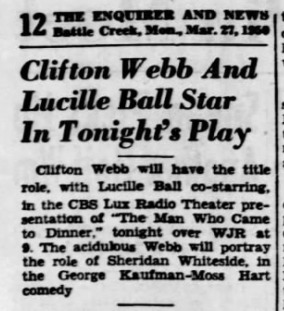
CAST
Lucille Ball (Maggie Cutler) was born on August 6, 1911 in Jamestown, New York. She began her screen career in 1933 and was known in Hollywood as ‘Queen of the B’s’ due to her many appearances in ‘B’ movies. “My Favorite Husband” eventually led to the creation of “I Love Lucy,” a television situation comedy in which she co-starred with her real-life husband, Latin bandleader Desi Arnaz. The program was phenomenally successful, allowing the couple to purchase what was once RKO Studios, re-naming it Desilu. When the show ended in 1960 (in an hour-long format known as “The Lucy-Desi Comedy Hour”) so did Lucy and Desi’s marriage. In 1962, hoping to keep Desilu financially solvent, Lucy returned to the sitcom format with “The Lucy Show,” which lasted six seasons. She followed that with a similar sitcom “Here’s Lucy” co-starring with her real-life children, Lucie and Desi Jr., as well as Gale Gordon, who had joined the cast of “The Lucy Show” during season two. Before her death in 1989, Lucy made one more attempt at a sitcom with “Life With Lucy,” also with Gordon.
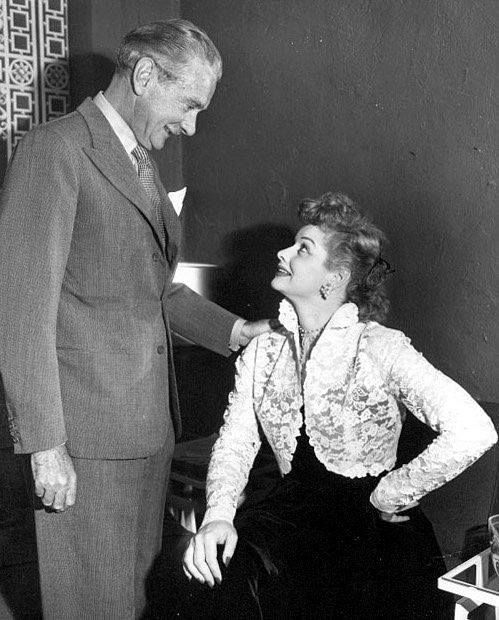
Clifton Webb (Sheridan Whiteside) had appeared with Lucille Ball in the 1946 film The Dark Corner. He was nominated for three Oscars. Webb had played the role of Sheridan Whiteside on stage for two years.
Eleanor Audley (Mrs. Stanley) appeared in several episodes of Lucille Ball’s “My Favorite Husband” as mother-in-law Letitia Cooper. Audley was first seen with Lucille Ball as Mrs. Spaulding, the first owner of the Ricardo’s Westport home in “Lucy Wants to Move to the Country” (ILL S6;E15). She returned to play one of the garden club judges in “Lucy Raises Tulips” (ILL S6;E26). Audley appeared one last time with Lucille Ball in a “Lucy Saves Milton Berle” (TLS S4;E13) in 1965.
Ruth Perrott (Sarah) played Katie the maid on Lucille Ball’s radio show “My Favorite Husband.” On “I Love Lucy” she played Mrs. Pomerantz in “Pioneer Women” (ILL S1;E25), was one of the member of the Wednesday Afternoon Fine Arts League in “Lucy and Ethel Buy the Same Dress” (ILL S3;E3), and played a nurse when “Lucy Goes to the Hospital” (ILL S2;E16).
Betty Lou Gerson is best remembered as the voice of Cruella De Ville in the original Disney film One Hundred and One Dalmatians (1961).
Stephen Dunn had appeared with Lucille Ball in Miss Grant Takes Richmond (1949).
John Milton Kennedy (Announcer)
‘DINNER’ TRIVIA

The same date as this radio adaptation (March 27, 1950), original star Monty Wooley arrived in Vancouver to perform in the play.

This broadcast aired the day after the “My Favorite Husband” episode “Liz’s Radio Script” also starring Lucille and Ruth Perrott.

Lucille Ball’s good friend and frequent co-star Mary Wickes was typecast as a nurse due to her breakthrough role as Nurse Preen in the Broadway, film, and television versions of The Man Who Came To Dinner.’ She does not play Nurse Preen in this adaptation. The character is given the first name Geraldine.

Lucille Ball previously appeared on “Lux Radio Theatre” for a November 10, 1947 adaptation of her film The Dark Corner (1946).

The first commercial talks about how Lux soap is gentle on stockings, like those worn by Betty Grable in Wabash Avenue.

The second commercial (between acts two and three) interviews actress Joan Miller, talking about the Warners picture Stage Fright, and how Lux helped keep the costumes looking great.
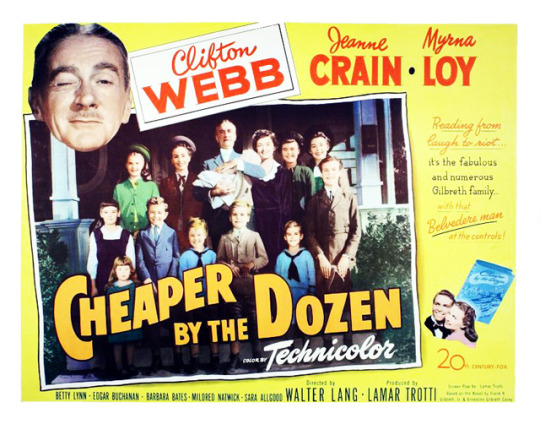
In the post show interviews, Clifton Webb promotes his next film Cheaper By The Dozen.
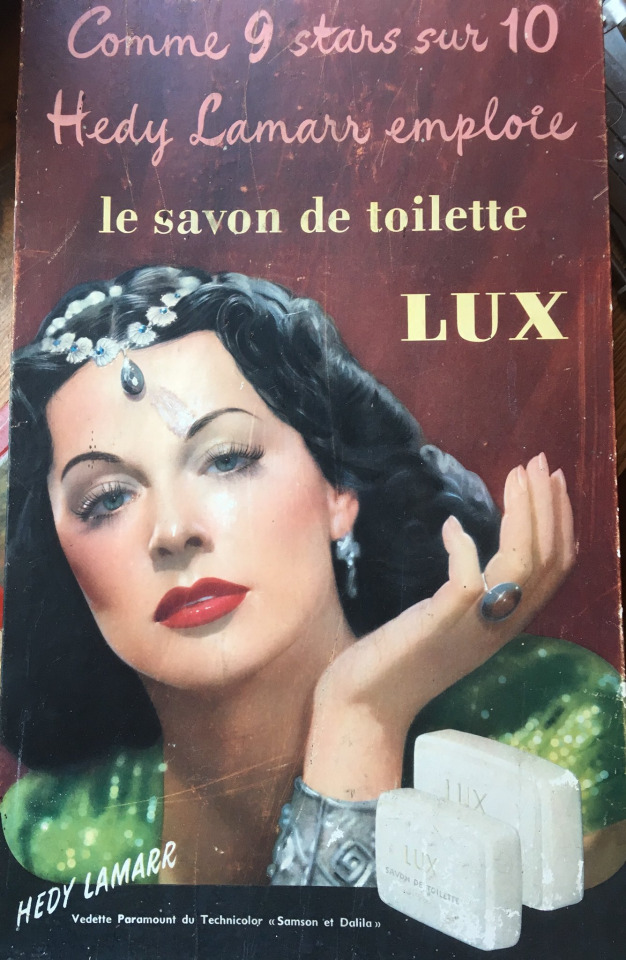
The final Lux commercial talks about how movie star Hedy Lamarr uses Lux.

The program presents a special address from president of the Red Cross, General George C. Marshall. The American Red Cross was mentioned on “My Favorite Husband” and Red Cross posters were frequently scene decorating the sets on “I Love Lucy.”

The ending of radio’s “My Favorite Husband” episode “Mother-in-Law” (November 4, 1949) starring Lucille Ball is identical to the ending of The Man Who Came To Dinner.
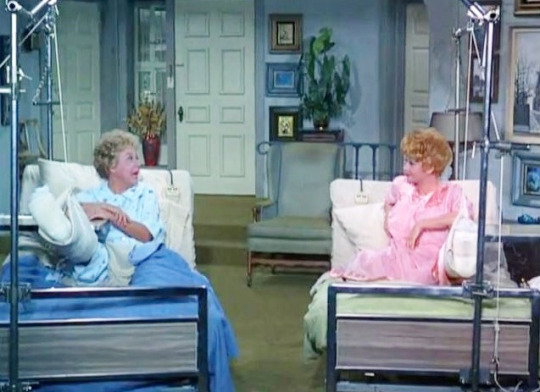
In “Lucy and Viv Reminisce” (TLS S6;E16) on January 1, 1968, while nursing Lucy, who has a broken leg, Viv slips and also breaks her leg. She says she feels just like a female version of The Man Who Came To Dinner.

“Vivian Sues Lucy” (TLS S1;E10) on December 3, 1962 also has a plot that resembles The Man Who Came To Dinner. Viv injures herself due to Lucy’s careless housekeeping, and is bedridden. Lucy goes out of her way to cater to her every whim, so that she won’t sue!
Although the play is fictional, it draws on real life figures and events for its inspiration.
Sheridan Whiteside was modeled on Alexander Woollcott.
Beverly Carlton was modeled on Noël Coward.
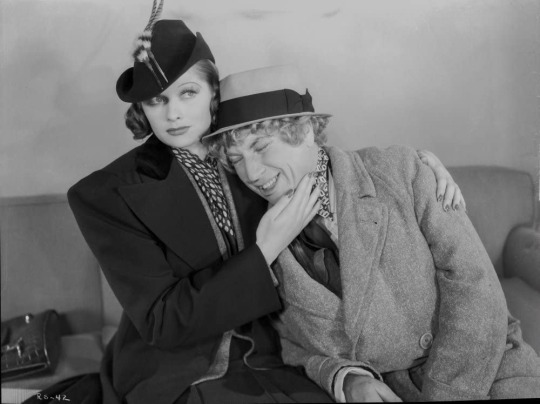
Banjo was modeled on Harpo Marx, and there is a dialogue reference to his brothers Groucho and Chico. When Sheridan Whiteside talks to Banjo on the phone, he asks him, "How are Wackko and Sloppo?"
Professor Metz was based on Dr. Gustav Eckstein of Cincinnati (with cockroaches substituted for canaries), and Lorraine Sheldon was modeled after Gertrude Lawrence.
The character of Harriet Sedley, the alias of Harriet Stanley, is an homage to Lizzie Borden. The popular jump-rope rhyme immortalizing Borden is parodied in the play.

Radio critic Dick Diespecker was not exactly enthusiastic about this adaptation.
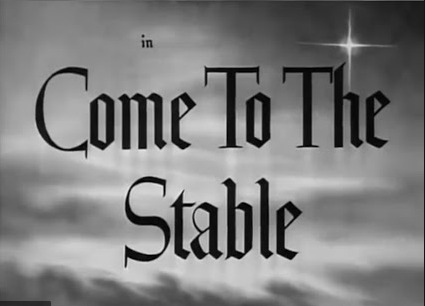
The announcer reminds viewers that next week “Lux Radio Theatre” will present “Come To the Stable” starring Loretta Young and Hugh Marlowe
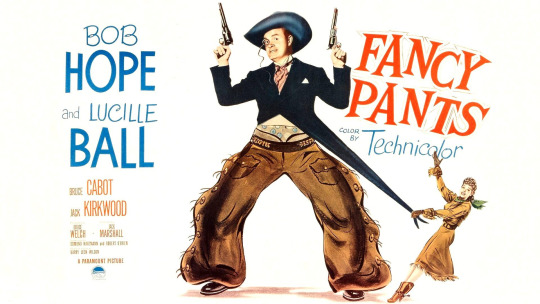
The announcer promotes Lucille Ball’s new picture Fancy Pants starring Bob Hope.
#Lucille Ball#The Man Who Came To Dinner#Clifton Webb#Eleanor Audley#My Favorite Husband#Ruth Perrott#Red Cross#Betty Lou Gerson#Hedy Lamarr#Betty Grable#Kaufman and Hart#Fancy Pants#Lux Radio Theatre#Lux#William Keighley
7 notes
·
View notes
Text
The REAL Story Behind The Omen (1976) And The 7 Most Terrifying Omens You Should Definitely Know About
You don't get much irony in horror.
You get buckets of fake blood, you get lashings of sexism with subtle notes of transphobia, and you have dozens of plot holes to get twisted up in. But The Omen (1976) in a very dark, very deathy way, was ironic.
Somehow a film about the rise of the Antichrist - AKA the end of the world - would be accompanied by wild animal attacks, sudden deaths, and even a decapitation. Yep, The Omen was, well, an omen. In fact, this cult classic horror flick is known as one of the most cursed films to date as a result of the story put to the screen and the events that took place behind it.
But the infamous tales surrounding this movie is not the only time an omen has preceded horrific events. In fact, we've been searching for signs of what is to come for millennia. Some of these signs still haunt our darkest nightmares.
You need to look out for them.
Today we will be determining just how accurate the portrayal of The Omen is to the prophecies of the Antichrist, the spooky events that took place behind the camera, and any other signs of death or misfortune you should be wary of.
*crow caws in the distance*

First, let's recap The Omen
The Bible is undoubtedly the best-selling book of all time. And, just like many other chart-topping hits, it’s been turned into a whole host of films. Each has suffered its own onslaught of criticism for its unique take on scripture.
The Omen is one of them.
But The Omen doesn’t follow Jesus’ life story, nor does it CGI various jungle animals onto Noah’s ark. It follows the Antichrist from birth to demise across 3 films (including a made-for-TV Canadian movie which we’ve all agreed to not talk about). It charts the rise of Damien as he develops his paranormal powers and loosely fulfils the prophecies set out for the Devil’s spawn.
Our story starts at his mysterious birth: after a woman has a stillborn child, her husband swaps it for a child whose mother died at birth. When Damien is just 5 years old strange things begin to occur. Animals act strangely around him, various aggressive dogs appear - oh, and Damien’s nanny rudely interrupts his birthday party by throwing herself out of a window with a noose around her neck.
Enter a new nanny who is less Mary Poppins and more Mary Most-definitely-a-satanist-who-wants-to-protect-Damien-and-overthrow-Christ. Things get worse (yes, it’s possible) when everyone around Damien begins to slowly work out that he may or may not be the Antichrist and in turn get killed in assorted horrific - but also mildly hysterical - ways.
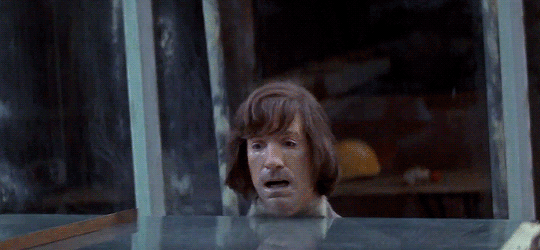
It’s the father of Damien (the adoptive one, not the actual Devil) who leads the investigation into his origins. He traces back Damien’s origins back to his dead mother’s grave. Turns out she was a jackal.
Enter the Antichrist expert - he gives Damien’s father the low-down on dealing with demonic children, and explains that the naughty-step is simply not enough. He has to be killed on hallowed ground with a collection of knives I’m pretty sure I saw on Antiques Roadshow. He takes the Daggers of Megiddo and his infant son into a local church, forces him onto the altar and prepares to kill him.
The police shoot him before he can do this.
The following films chase up the rest of Damien’s short but eventful life and include: one sex scene, one King Herod-inspired ‘kill all babies born on this day cause one of ‘em is Jesus’, and even a last minute cameo by Christ himself.
Unlike most horror franchises, however, The Omen is not based on some paranormal investigation or a forgotten urban legend - the story inspiring it is kept very close to the hearts of many around the world. It’s this troubling premise which makes this film one of the most terrifying to date. Question is, just how accurate is The Omen to the actual end of days forecasted by Christians?
How accurate was The Omen to actual prophecies regarding the Antichrist?
Like most things mentioned in The Bible and other religious texts, things are typically vague or lost in translation. This means many concepts and stories have been rewritten and rethought in numerous different ways.
The Omen kinda had to connect the dots.
But there are a few defining features of Damien and his life story which are uncomfortably close to what might just be the apocalypse…
First, the Antichrist is supposed to be born as the opposite of Christ: he is not born of God and a virgin, but of Satan and a ‘whore’. Whilst The Omen appears to be slut-shaming a jackal, we do know Damien is the spawn of Satan. His animal mother (which is referenced later in the franchise when Damien is discovered to have Jackal bone marrow cells) is a reference to Jackals’ biblical presence as tricksters.
The Omen also sticks to the dominant line of thought on Damien’s career path. The Antichrist is mentioned 3 times in the New Testament and follows the end of the world, something we see in the dying moments of the final film: the Book of Revelation and other prophetic texts claim he will rule for 7 years before being defeated by Christ/Angel Gabriel’s army. He will be a tyrant, a trickster, rise to power, and (perhaps) claim he is a messiah.
The Omen is an abridged version of this. Damien is at one point a CEO and then an ambassador to the US before he sees an image of Christ when he gives out his last breath.

But here’s the thing.
Everyone has a different take on how the Antichrist will take his first steps to almighty power before being dethroned by the JC. And everyone has a different take on who it is.
Donald Trump, Hillary Clinton, the Pope (I’m pretty sure all of the popes have been accused of being the Antichrist), Prince William… Type in a celebrity name - literally any celebrity name - and the word ‘antichrist’ into Google and there will be “proof” of Kate Hudson using satanic subliminal messaging in How To Lose A Guy In 10 Days. By all accounts The Omen is just another version of how the Antichrist could rise and fall.
The Omen does include a few other suitably-satanic references: the Daggers of Megiddo don’t actually exist according to lore, but are associated with the end of the world. Megiddo is the site of the final battle between the Antichrist and Jesus Christ as mentioned in the Book of Revelation. Its Greek name was even ‘Armageddon’.
We also see throughout the franchise a satanist plot to ensure the Antichrist grows up safely and is ready to do his dark bidding. Modern theorists claim the Antichrist will arrive hand-in-hand with a satanic plot to overturn the Christian faith.
The Omen effectively charts out how the world might end. But for many people working on the film, they were experiencing hell in their own way.
What really happened on the set of The Omen?
An omen is defined as a phenomenon that predicts and hints at the future, or signals a change. The birth and rise of the Antichrist probably fits the definition as it signals the Second Coming of Christ, Judgement Day, and numerous other events anticipated by Christians across the globe. It is an omen for the end of the world.
Hell, it’s the ultimate omen. It doesn’t get more omen-ny than that.
But in some weird omen-ception, The Omen was an omen for the people producing the film. *squints in confusion*
Basics, it is now known as one of the most cursed movie sets ever. And here’s why.

Gregory Peck, the father of Damien, allegedly canceled his seat on a flight that would crash and kill everyone on board. When he did finally get on a plane and flew to England his plane was struck by lightning. The film’s writer experienced the same thing on a separate flight days after Peck’s.
The producers and some actors also nearly attended a restaurant one evening when it was destroyed in an explosion. One of these same producers, Mace Neufeld, also happened to check out early from a hotel in London which was blown up by the IRA shortly after.
The special effects designer witnessed traumatic events mirroring the movie far too closely, too: his wife was decapitated in a car crash, a similar event to one we see in the film. Even an animal trainer used for a scene from which Baboons act wildly and crazed around Damien was killed after being mauled by a tiger.
Yeah.
It’s all very ommeny.
But what are the other omens you should be looking out for?
The 7 omens you should most definitely be watching out for
#1 - Crows
All films or TV shows that feature death or war also feature crows. Their fateful cawing has historically been an omen of misfortune or death and is used for foreshadowing as obvious as the colour black. A single crow is an omen of bad luck - a murder of crows (more than five) is an omen of death or illness for either you or someone you know.
In ancient times birds were common omens and it was the type of bird which signaled different positive and negative changes. Crows in particular were believed to be messengers between the mortal world and the afterlife. Witches were also believed to use crows to cast their death spells.
They have since gained a reputation for being cunning and intelligent creatures, much like the jackal mother of Damien in The Omen.
#2 - Owls
I told you - we are convinced birds bring death.
Much like crows, owls are very deathy. Walking under a tree and hear an owl hoot? You or a family member are gon’ die. One lands on your roof? Death is a-coming.
Owls are even historically believed to herald doom with one Roman Emperor - Antonius - dying after an owl was seen perched above his bedroom door. They are considered wise creatures according to ancient civilisations, as if they know something about the future we do not.
The Welsh, on the other hand, believed they bring fertility. If an owl hoot is heard by a pregnant woman she will have an easy labour.

#3 - Doppelgangers
According to German and Irish folklore, seeing an ‘exact replica’ of you born to different parents is a sign of your death. If your family members or your friends see one, beware of impending danger.
These ‘double-goers’ are considered evil twins in folklore. If you spoke to your doppelganger, they’d try and trick you and plan evil ideas in your mind.
Breton and Cornish folklore claim they are Ankou, servants of death himself who thus personify it.
#4 - Death Knocks Thrice
Let’s set the scene: you’ve just ordered a Nandos and you hear the knock at the door. But instead of a halloumi-topped beanie burger, you open the front door to no one.
Rather than a delicious meal you will soon experience death.
Irish, Scottish, and Native American communities follow this folklore and it is referenced in many different films including The Conjuring. The Perron family hear continuous knocking which comes in threes - the Warrens, however, claim it is a demonic entity or spirit mocking the holy trinity.
#5 - Phantom funerals
Funerals normally come after the omen of death, you know, when the actual ‘death’ part has occurred. But fake funerals led by ghosts are an omen of the death of a loved one. They will take the same place and same route of the actual funeral, however.
If you do see one, however, don’t look into the casket; otherwise, it’ll be your own.
(Dun dun duuuh)
It is believed they are sent by fairies who are infamous for causing mischief. A similar phenomenon, ‘the tolaeth before the coffin’, is when one hears the coffin making process or the funeral take place.

#6 - Solar eclipses
We now have the benefit of science and astrology to tell us that sometimes it gets really dark and really cold in the middle of the day. But way back when, the sun effectively disappearing for a few moments was rather more terrifying.
Ancient civilisations believed it was a warning from pissed off gods that they were going to exact some revenge and send some impending danger or death. Most cultures even believed a folkloric beast or native animal was eating the sun. In fact, that’s why many communities would bang pots or pans together during eclipses to scare away the demon doing it.
They are still considered a mysterious sign something bad is about to go down.
#7 - Black butterflies
We end on an omen I’m probably going to incorporate into my aesthetic for 2021. A black butterfly is considered to be a symbol of misfortune and death in some cultures and a positive sign for others. It could also equate to a less lethal ‘death’ - that is the death of a relationship or a project.
It can thus be considered an omen of renewal or rebirth. And lord knows we all need that for next year.

Have you ever seen an omen?
Let me know in a comment below.
If you liked this post make sure you like, reblog, and then hit follow. I post a new article on the paranormal every Saturday and a new ghost story everyday!
*flies away with the black butterflies*
#the omen#omen#antichrist#demons#satan#satanic#satanism#good omens#bad omens#bible#valak#the conjuring#demonology#666#superstitions#death#crows#black cats#eclipse#book of revelation#horror movies#best horror movies#horror#scary movies#paranormal#supernatural#ghosts#spirits#true ghost stories#real ghost stories
16 notes
·
View notes
Text
782
Your ten favorite movies
Movie number one: Two for the Road (surprise surprise)
1) Who's the main actor?
Audrey Hepburn and Albert Finney.
2) When did it come out?
Pretty long time ago. It came out in 1967 if I’m not mistaken.
3) What's the genre?
Romantic comedy and drama.
4) Do you know where it was filmed at?
Yeah, as far as I know the whole film was shot on location throughout southern France.
5) How old were you when you saw it?
I don’t actually remember the exact year anymore, but it was either in 2013 or 2014, which makes me 15 or 16 when I watched it for the first time.
Movie number two: Good Will Hunting
1) Who's an actress in this movie?
Minnie Driver, and she did such a fantastic fucking job with her role.
2) Out of 10 stars you'd give it?
9.5. The part where Robin Williams and the actor playing the math teacher handle their differences was a bit blah for me, but the film was otherwise perfect.
3) Did it have a surprise ending?
I wouldn’t call it a surprise. It was a well-deserved ending for the main character and I’m sure everyone who’s ever watched this movie rooted for such an ending as well.
4) How long was it?
Around two hours? idk I never checked.
5) Did you first see it in theatres?
Hahahaha definitely not. It came out five months before I was born.
Movie number three: A Clockwork Orange
1) What's this movie rated?
Like, in terms of parental advice or its score? I’m not sure so I’ll put both. The film in all its unedited glory got an X rating which is real fucking understandable given that, in my opinion, this was Kubrick’s most intense work; though in my research just now they were able to tone it down to R after Kubrick edited out a certain scene. As for its score, it holds an 87% in Rotten Tomatoes and 8.3/10 on IMDb.
2) Did critics approve of it?
Critics definitely approved of it as a piece of film, but I’m sure it was very uncomfortable for the viewing public.
3) Who were you with when you saw it?
I watched it on my own. I didn’t know what it was gonna be about, so I was in for the shock of my life when Alex and his droogs broke into the first house.
4) Did this movie make you cry?
No but it made me feel uneasy.
5) Who are five actors/actresses in this movie?
I only remember Malcolm MacDowell, who played the lead character. I’m honestly not familiar with the other actors.
Movie number four: Revolutionary Road
1) Is the main actor your favorite actor?
One of them is - Kate Winslet. I’m alright with Leonardo DiCaprio but he isn’t my favorite.
2) Do you know how old he is?
Kate Winslet? Not so sure, but I think she’s like 45.
3) Did this movie make you laugh?
This movie is not to be laughed at lol
4) Last time you watched it?
A few months ago before they took it out of Netflix forever, ugh.
5) Are you the appropiate age to see it by yourself?
Yes. And I would rather watch it by myself, because it’s a lot to take in.
Movie number five: Gone with the Wind
1) What made you mad about this movie?
The racism that surrounded the film makes me angry. For example, the actress who played Mammy (Hattie McDaniel) was the first black actor to be nominated for an Oscar, but she wasn’t even allowed to attend the ceremony where she was nominated in. It took one Clark Gable throwing a fit and threatening to boycott the event for the higher-ups to finally agree on Hattie attending the Oscars.
2) Was it based on a true story?
It was based on real historical events, but the story itself wasn’t real.
3) Do you wish it was real in any way?
It kinda was.
4) So what's it about, anyways?
This is really not one of those movies you can explain in one sentence lol but uh rich privileged southern belle gets entangled in the Civil War, marries thrice and never for love, everyone around her dies, and once she’s left alone we see her fend for herself and start building a life of her own. That doesn’t even do the movie justice and if you really wanna know, best to watch all four hours of it.
5) Did they make a video game out of this movie?
OMG no, that would be in such poor taste.
Movie number six: Room
1) Did this movie bore you at any time?
Not at all. It had me invested from start to finish.
2) Was there a kiss scene?
I don’t know, I don’t think so.
3) Who was the protagonist (main character)?
Brie Larson plays the lead role, but I’ve forgotten her character’s name, or if she even had one.
4) Have you seen this movie more than once?
Absolutely. This was my favorite film for a brief period and I watched it everyday then.
5) Last time you saw it?
2016, probably.
Movie number seven: Roman Holiday
1) What is this movie's genre?
Romantic comedy.
2) Are there any kid actors in this movie?
Nopes.
3) Where did it all take place?
A biiiiiiig chunk of the movie was shot on location in Rome.
4) Who was the biggest star in the movie?
Gregory Peck. Swoon. Fun movie fact! This was Audrey Hepburn’s feature film debut, and originally the studio was to give her a much smaller billing at the start of the movie compared to Gregory. He had an inkling Audrey was gonna end up super popular once the film got released, so he told the studio to give her equal billing, which technically made her also the big star in the movie alongside Gregory. He wasn’t wrong.
5) What year did it come out?
1953.
Movie number eight: Requiem For A Dream
1) Main actor and/or actress?
Oh dude, a lot. This movie didn’t fuck around with its cast lol you had Jared Leto, Ellen Burstyn, Jennifer Connelly, and Marlon Wayans.
2) Is this a one-time only movie?
I have no idea what you mean by this.
3) Is it a sequel to anything?
Nopes.
4) How much money did it make?
Bruh I don’t know lmao? I’ll have to Google that - Wikipedia says it made $7.4 million.
5) Favorite part?
It’s not my favorite part because it makes me happy, but for me the most memorable scene was when the mom was at the peak of her addiction and her refrigerator came to life. The montage in the end also gave me goosebumps.
Movie number nine: Carol
1) When did you first see this movie?
2015. It was one of the factors that made Gab and I reconcile as friends, so I’m super thankful that this film allowed us to bond.
2) Did it take a second time for you to like it?
Not at all. I was in love with it from the very beginning.
3) Does it have a happy ending?
Yes.
4) Who would you recommend it to?
People who want an LGBT film with a happy ending.
5) What's its theme song?
It doesn’t really have one, but its score was composed by Carter Burwell. OH I just remembered Billie Holiday’s Easy Living was featured prominently in one scene, but it’s not really the movie’s theme song.
Movie number ten: Portrait of a Lady on Fire
1) Do you still have the movie ticket?
I think mine is still with Gabie, if she kept it.
2) Favorite part?
Everything about this movie was beautiful. I loved when Héloïse’s dress caught on fire, when Marianne was drawing Héloïse in her sleep, when Marianne finally saw her vision come to life, when Marianne attended the exhibit and saw the painting of Héloïse...and that final fucking scene.
3) Were there any songs you knew in this movie?
Nope. I don’t remember if they played any songs.
4) A quote from this movie:
“In solitude, I felt the liberty you spoke of. But I also felt your absence.” and “Do all lovers feel they’re inventing something?”
5) Were the main actors/actresses a perfect match or not so much?
Yes they FREAKING WERE AAAAHHHHHHHH
Random Questions
1) Which one have you seen most on DVD?
Gone with the Wind, but only because it’s the only film in this selection that I have on DVD.
2) Which one have you seen most in theatres?
Other than Portrait, I didn’t get to catch these in the cinema.
3) Did your parents like any of them?
They haven’t seen any of the movies I picked.
4) Which one did you see with your best friend?
Carol and Portrait hahahaha, both lesbian movies. She was the one who made me watch them in the first place too.
5) Would you see #1 again?
Over and over again. I will never grow tired of it.
6) Is #4 a movie you can only watch every once in a while?
Yes, super accurate. The subject matter is very heavy to begin with, so pair that with superb acting and you’ve got yourself a movie that’s hard to get through.
7) Was #5 hard to understand?
Only because it’s sooooo long and there are so many plots and subplots. Also, as someone who has never actually read about the Civil War in full detail, it has also hampered my understanding of some of the events in the movie.
8) Did you see #2 the day it came out?
I didn’t see it until like, 18 years after its original release.
9) Do you have #3's movie ticket still?
I never had it to begin with.
10) Are there any sequels to these movies coming out?
As far as I know, no.
11) Does your best friend like #9?
Gabie’s very in love with it. She once kept count of how many times she had watched it when it first leaked on the internet loooool and if I remember correctly her watch count peaked at 126.
12) Did #10 have horrible special effects?
No.
13) Who directed #6?
Lenny Abrahamson.
14) Did #8 scare you?
Absolutely. I needed a long-ass break from everything after I finished it lmao.
15) Does #7 have a better effect at night?
No. The effect has been the same for me whatever time I watch it.
2 notes
·
View notes
Text
A Top 30 Horror Movies
This is Halloween! This is Halloween!
There are a lot of awesome horror movies, but I picked just 30 that qualify as my favorites.
#30 - The Conjuring
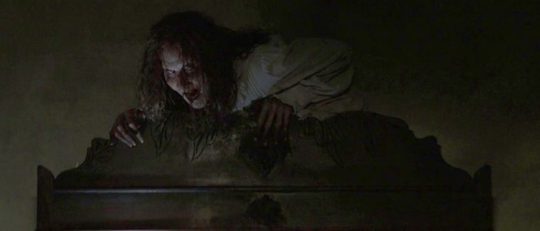
So this movie isn’t perfect. The last 20-30 minutes kinda turn into a mess as the demon gets more confrontational. But, the first 90 minutes are a near perfect slow build of tension and smart visual storytelling. All the actors do a good job, even the kids. This movie has insured I never play Hide and Clap.
#29 - Paranormal Activity 2

In my opinion superior to the (still pretty good) original, PA2 moves faster than its predecessor and uses the audience’s curiosity against them in interesting ways. You’re always looking to the edges of the screen for something or someone out of place, and as the movie progresses, that curiosity rattles the nerves more and more.
#28 - The Hills Have Eyes (2006)
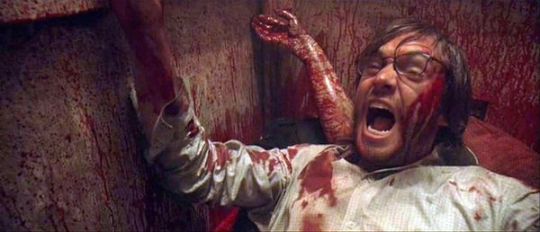
One of the only modern horror remakes that improves and expands on the original. The Hills Have Eyes hit when I was a junior in high school. It is gleefully gorey and deranged. People die in awful ways, and the protagonist (seen above) spends most of the last half hour drenched in blood. It’s a lot of fun if you’re into that sort of thing.
#27 - Event Horizon

Space Horror is a hard genre to get right. Event Horizon knocks it out of the park by getting the slow build right. There are gruesome and bloody images from time to time, but the majority of the movie is built on tension and dread. Having Sam Neill and Laurence Fishburne leading the cast adds some dramatic weight to the proceedings.
#26 - The VVitch

The GOAT 17th Century rural horror movie. This movie gets real weird and leaves a lot up to the audience’s imagination. The less said about it the better if you haven’t seen it. But, even for the 2010s renaissance of horror, this one stands out.
#25 - Hereditary

This is a list of my favorite horror movies, not the scariest. If it were “scariest” this would be top 10, maybe top 5. The second half of this movie is some of the most uncomfortable and relentlessly horrifying storytelling I’ve ever seen. Across just two feature films, Director Ari Aster has proved himself a master of the horror genre. We’re all worse off for it.
#24 - Return of the Living Dead

The first movie on this list that is more funny than scary, Return of the Living Dead is laugh out loud hilarious at times. Somehow, it still manages to be a more effective zombie movie than most serious ones. Great punk rock soundtrack and highly quotable, this is great for people who scare a little too easily.
#23 - Friday the 13th Part 2

Basically improving on the original in every way, Friday the 13th Part 2 is iconic even without Jason’s hockey mask making an appearance. The killer instead keeps a lumpy bag over his head the whole time. The movie lets you know early on that its going to be ridiculous, when the Part 2 logo literally smashes through the Friday the 13th title card. Great representation of the slasher genre.
#22 - Suspiria (2018)

I’m a sucker for lore in movies, and Suspiria is full to the brim with details that expand on the world. Led by great performances from Tilda Swinton and Dakota Johnson, the movie is highly intelligent and occasionally brutally violent. The fact that the director’s prior movie was “Call Me By Your Name” shows that he’s a talented filmmaker no matter the genre.
#21 - Halloween (1978)

Michael Myers is iconic. The music is iconic. Jamie Lee Curtis is an all-time great horror leading lady. Halloween is a must watch for horror genre fans.
#20 - Get Out

This movie is so well written it won an Oscar. Get Out is both hilarious and brutally tense. The acting is awesome across the board. Who knew Jordan Peele would use his comedy talent to make a career in scary movies?
#19 - Shaun of the Dead

A classic comedy filled with so many jokes that it takes about 3 watches to catch them all. Not scary in the least, but uniquely playful in the genre. Also made Simon Pegg a star. Nothing but greatness here.
#18 - The Descent

I’ll always remember my first watch of this movie. It slaps you in the face with trauma in the first 5 minutes. Then spends three quarters of an hour building tension and claustrophobia before suddenly becoming a solid monster feature. Though it fizzles a little at the end with some wtf moments, the first 3/4ths are very effecting.
#17 - Nightmare on Elm Street
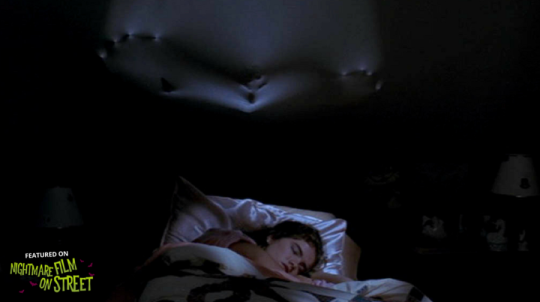
Nightmare on Elm Street is just a cool as hell idea for a horror movie. It takes the occasional predictability of Halloween or Friday the 13th and flips it. The kills are inventive and visually interesting, the effects are very cool, and you get to see Johnny Depp get brutally murdered. win-win-win.
#16 - Saw

Saw came out at a perfect age for me. Seeing this movie at 16 was a great experience. Even as the sequels got worse and worse, the whodunnit nature of the original held up. People were literally drowning in gore by Saw 3, but this is a solid movie that knows when to tone things down. Great watch.
#15 - Evil Dead 2
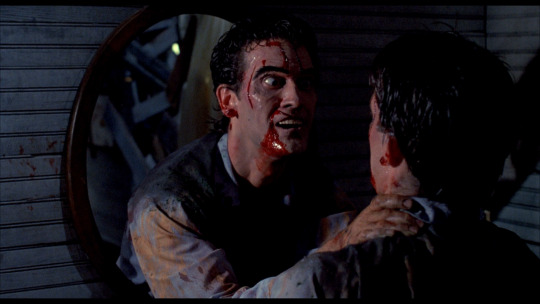
By turns hilarious and unsettling, watching Evil Dead 2 allows the viewer to marvel at the special effects done on a shoestring budget. Bruce Campbell is an absurd and talented physical actor, and singlehandedly carries this movie into the hall of fame.
#14 - IT Chapter 1

Chopping the 1,000 page Stephen King book in half allowed the first half of the IT saga to thrive. Bill Skarsgard is a fantastic Pennywise, and the child actors all do well. A slightly repetitive series of scares keeps this one from perfection (and would be the downfall of Part 2), but its still an amazing peak of the genre.
#13 - Dawn of the Dead (2004)

Fast zombies. Zack Snyder directing before his head got too big. Hilarious musical cues. Apocalyptic imagery. This movie is one of the best of the zombie genre.
#12 - Fright Night (1985)
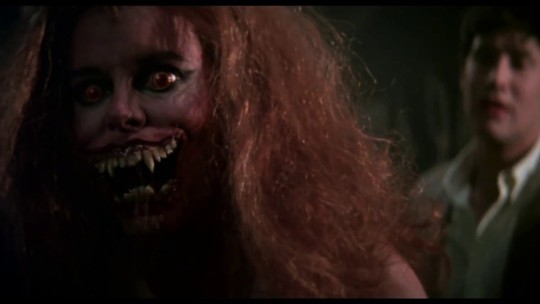
One of the most simply fun movies on this list, Fright Night is straight out of the mid 80s. It never takes itself too seriously, but it still has some good scares sprinkled in. An essential vampire movie, and the remake with Colin Farrell wasn’t half bad either.
#11 - The Omen (1976)

One of my early favorites, The Omen is another lore filled film that gradually ramps up the twists until the dramatic finale. Probably one of the least scary films on my list, its built on Gregory Peck being a great actor and a few pretty messed up deaths.
#10 - An American Werewolf in London

Another favorite from childhood, this is the best the werewolf genre has to offer. Made by John Landis who also did Animal House and Blues Brothers, American Werewolf balances 80s level of gore with award winning special effects and clever music (every song featured has moon in the title).
#9 - It Follows

One of the newest (and most original) movies on the list, It Follows is one of a kind. It’s terrifying, has great cinematography and halfway through the movie you have absolutely no clue how it will end. Must see.
#8 - Midsommar

This is absolute newest film on the list, and one I’m anxious to rewatch. Midsommar sets itself apart by being 95% in broad daylight and providing a wealth of backstory to the “bad guys”. Also Florence Pugh shows that she is an amazingly skilled actress, particularly in the final 10 minutes.
#7 - The Exorcist

^That guy is scary. He’s also only in the movie for like 3 seconds. Obviously this is a classic. If you haven’t seen it and like horror at all, it will still amaze you, almost 50 years later. I would’ve loved to be a fly on the wall when it was in theaters watching people lose their minds. Still a masterpiece of the genre.
#6 - The Blair Witch Project

I watched The Blair Witch Project for the first time alone in my room at age...I believe 14. That was a mistake. While the mistakes of the hikers become a bit hilarious on multiple rewatches, the night scenes are still tense af. The last 15 minutes are uniquely terror-inducing. Everybody’s seen this one, but if you haven’t, maybe watch it with the lights on?
#5 - The Evil Dead (2013)
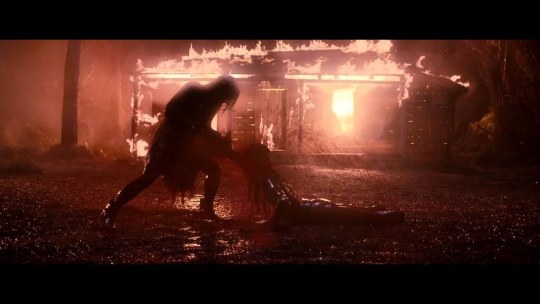
This movie is one of the most intense and relentless horror movies ever. Nail guns, rusty knives, a turkey carver, a chainsaw, a machete: people get literally ripped apart in this movie. But, here’s the thing, its really really fun to watch. You’ll be out of breath when its over, but still.
#4 - Cabin in the Woods

Cabin in the Woods isn’t THAT scary. It flirts with scary. It has some shocking and frightening moments But mostly its a shitload of fun that plays on every trope of the horror genre. It also has one of my favorite final moments of any film on this list.
#3 - The Thing

Underappreciated upon its release, The Thing has become the standard by which body horror is measured. Its delightfully paranoid and lets the audience sit and think as gruesome deaths pile up.
#2 - Alien

One of the first movies to terrify me, Alien is one of the greatest horror movies ever made. The monster design is iconic. The kills and set pieces are one of a kind. It has a kick ass female heroine played by Sigourney Weaver. What more do you want?
and finally
#1 - The Shining

YEAHHHHHHH
Here’s a brief list of iconic Shining scenes:
- An elevator full of blood
- The old woman in room 237
- All work and no play make Jack a dull boy
- The snowy hedge maze
- Here’s Johnny
- Danny’s vision of the twins
- The house of horrors finale featuring the man in bear costume featured above
and of course
- REDRUM
This movie is a masterpiece, made by one of the greatest directors of all time, starring one of the greatest actors of all time and based on one of the scariest books by the defining horror author of our time. Its damn near perfect.
8 notes
·
View notes
Note
Hey random question but have you seen the AFI's 100 years 100 stars list and do you agree with the placement, do you feel like anyone should be higher/lower?
Hi!
I’ve seen it (and I actually went back to look at it to make sure I had it right). First of all, I disagree with Humphrey Bogart and Cary Grant as numbers one and two. Based purely on talent I would have put Spencer Tracy and James Cagney. Not that the other two aren’t talented, but in my opinion Cagney and Tracy both have a thing that’s very realistic. Also they seem much more versatile.
Cary Grant is great at what he does, but can you picture him in a tough-guy gangster role or as a hillbilly farmer? Same for Humphrey Bogart. Imagine him as, say, the title character in My Man Godfrey.
James Cagney can play a cruel, murderous mobster and then turn around and star in Yankee Doodle Dandy.
Spencer Tracy literally started his film career playing a secret service man (Marie Galante, 1934) and then progressed to a series of roles as a down-to-earth but slightly naïve professional (Woman of the Year, Without Love, Desk Set), then, when he was a bit older, the slightly stodgy upper class family man who challenged his values and ended up doing the right thing (Adam’s Rib, Guess Who’s Coming To Dinner), but still found time, in the middle of it, to be in Pat and Mike, playing the Mike of the title, a wisecracking, somewhat shady sports promoter.
I also think Gregory peck deserves to be ranked higher than Clark Gable. I have no evidence-based reasoning behind this, I just don’t care all that much for Clark Gable and think Gregory Peck is lovely.
I’m down for Katharine Hepburn for number one female film star! But come on, guys, Carole Lombard is only number 23? That’s a crime! I’m so glad Judy Garland got on there, though, if she hadn’t I would have been really (really) annoyed.
I might have put Marlene Dietrich higher on the list. Such presence! Plus the camera just loves her face. It’s like cinema was invented for her to be in it.
Ditto Lauren Bacall. Anyone who can be that sophisticated at age 19 has my vote for at least being in the top 10.
No Myrna Loy? Come on, let’s get Myrna in there!
Lowkey wish Miriam Hopkins had earned a place there. I think she’s wonderful.
Olivia de Havilland, anyone?
Jean Arthur. That’s all I have to say. Come on, you pick Grace Kelly over her?
How about a little love for Sydney Poitier? Scumbag Kirk Douglas is five spots ahead of him and that just isn’t fair.
I can’t decide if Buster Keaton deserves a higher ranking than Charlie Chaplin or if the current placement is just right.
Thank you for the question honey, and sorry for the extra-long answer!
Remember, my ask box is always open for your questions!
#old hollywood#anonymous#asked and answered#100 years 100 stars#AFI#Humphrey Bogart#Cary Grant#James Cagney#Spencer Tracy#Gregory Peck#Clark Gable#Katharine Hepburn#Carole Lombard#Judy Garland#Marlene Dietrich#Lauren Bacall#Myrna Loy#Miriam Hopkins#Olivia de Havilland#Jean Arthur#Grace Kelly#Sydney Poitier#Kirk Douglas#Buster Keaton#Charlie Chaplin#long post#and long tags section
8 notes
·
View notes
Text
PR Ethics Lessons From ‘Roman Holiday’
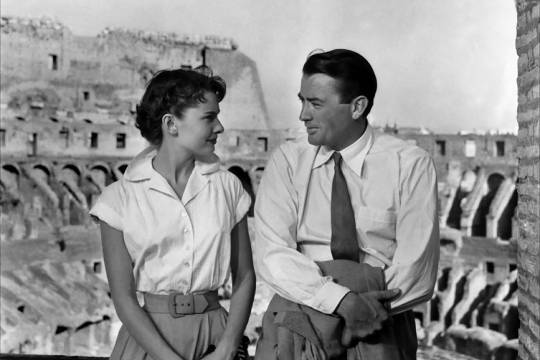
The perils of overly cozy media relationships can be very real. Learn when to walk away from a story.
September 1, 2020 4 min read
Opinions expressed by Entrepreneur contributors are their own.
Among my favorite films is Roman Holiday, an enduring classic and spiritual forerunner to today’s rom-coms, released this month in 1953. In the event you’re not familiar with it, Roman Holiday is the story of a royal who decides to be bad. Audrey Hepburn plays Princess Ann, a monarch from an unnamed, exotic country on a state visit to Rome who decides to sneak away and embark on a voyage of discovery in the Eternal City. Hepburn’s character even claims that her father is in public relations! But in fact, he’s royalty!
While out adventuring, she encounters Gregory Peck’s character, Joe Bradley, an American reporter. During their first encounter, Joe doesn’t recognize the princess, but after an unlikely and chaste night together, he soon does. As the morning headlines scream about a missing princess, Joe realizes that he has stumbled across the year’s biggest scoop. Instead of admitting that he is a reporter, Joe claims to be a fertilizer salesman, joining Hepburn’s character on a whirlwind romantic adventure around Rome. Much joy and adventure ensue.
Related: How to Pitch a Story to a Reporter Without Offending Them
In the event you haven’t seen the film, I will try not to spoil it entirely. But the hero journalist, having worked his way so close to the story under initially accidental and then utterly false pretenses, begins to have doubts about using fraudulent access to write a story that will advance his career. Joe Bradley’s character is joined by Eddie Albert, playing a sort of beatnik photographer, Irving Radovich, who is following the princess’s story as well as chasing a big payday, offering a devil’s advocate sort of perspective. And in a way, this set of circumstances is precisely why Roman Holiday is a metaphor for instances when public relations professionals – or even clients – and journalists become too close.
Reporters being too chummy with their subjects has long been an issue in journalistic and PR ethics. Such closeness can lead to unintended consequences. Facts can become blurred, and both parties’ desire for a favorable outcome, in most cases positive coverage, can mean that tough and fair reporting isn’t likely or even possible. Inaccuracies are often ignored, and “softball” coverage can occur in the name of loyalty. Or, the inverse happens, and negative news about a client can be published without corrections or any sort of forceful rebuttal from PR, because they’re hoping to preserve editorial relationships.
Related: 10 Ways to Get Global PR Exposure
However, there is simply a time to walk away, particularly when the relationship with the subject (or in the case of PR, the subject’s advocate) is going to cloud ethical waters or let key facts or other issues “slide.” This might include the passage of insider or confidential information between reporters and PR people. In many cases, even what seems like a positive story can do longer-term harm, including creating potential long-range consequences for valuation.
Knowing when to walk away from a story based on too much-shared information is a key skill for PR people. This is especially important given that many people who call themselves journalists these days are in fact, opinion writers and wannabe pundits. The integrity of these types is usually suspect, as are the media outlets that they work for.
Furthermore, not walking away from a potentially negative or controversial story can have the effect of lumping a client in a group with unsavory other subjects, creating unpleasant comparisons across the marketplace and tarnishing a firm’s brand image. It is also acceptable to walk away from stories that take up too many company or agency resources or stories that move forward even when the reporter has the wrong premise. It is also highly acceptable to walk away when the story goes against company values and/or hurts client allies.
Related: Kylie Jenner’s Removal from Forbes’ Billionaires List Underscores the Basic Rules of PR
In case you’re itching to know what happens in the film, Gregory Peck’s character does choose the honorable path and sacrifices a large payday in the name of romance and honor. Stoically, his character leaves the big scoop unpublished, ultimately assuring the princess that no negative coverage will come as a result of their “Roman holiday” together, and they part ways.
His honorable act in the film echoes the sort of ethics and good judgment that PR people should practice when it comes to overly-cozy relationships with the press and deciding whether or not to walk away from a story.
loading…

Website Design & SEO Delray Beach by DBL07.co
Delray Beach SEO
source http://www.scpie.org/pr-ethics-lessons-from-roman-holiday/
source https://scpie.tumblr.com/post/628140898721611776
0 notes
Text
PR Ethics Lessons From ‘Roman Holiday’

The perils of overly cozy media relationships can be very real. Learn when to walk away from a story.
September 1, 2020 4 min read
Opinions expressed by Entrepreneur contributors are their own.
Among my favorite films is Roman Holiday, an enduring classic and spiritual forerunner to today’s rom-coms, released this month in 1953. In the event you’re not familiar with it, Roman Holiday is the story of a royal who decides to be bad. Audrey Hepburn plays Princess Ann, a monarch from an unnamed, exotic country on a state visit to Rome who decides to sneak away and embark on a voyage of discovery in the Eternal City. Hepburn’s character even claims that her father is in public relations! But in fact, he’s royalty!
While out adventuring, she encounters Gregory Peck’s character, Joe Bradley, an American reporter. During their first encounter, Joe doesn’t recognize the princess, but after an unlikely and chaste night together, he soon does. As the morning headlines scream about a missing princess, Joe realizes that he has stumbled across the year’s biggest scoop. Instead of admitting that he is a reporter, Joe claims to be a fertilizer salesman, joining Hepburn’s character on a whirlwind romantic adventure around Rome. Much joy and adventure ensue.
Related: How to Pitch a Story to a Reporter Without Offending Them
In the event you haven’t seen the film, I will try not to spoil it entirely. But the hero journalist, having worked his way so close to the story under initially accidental and then utterly false pretenses, begins to have doubts about using fraudulent access to write a story that will advance his career. Joe Bradley’s character is joined by Eddie Albert, playing a sort of beatnik photographer, Irving Radovich, who is following the princess’s story as well as chasing a big payday, offering a devil’s advocate sort of perspective. And in a way, this set of circumstances is precisely why Roman Holiday is a metaphor for instances when public relations professionals – or even clients – and journalists become too close.
Reporters being too chummy with their subjects has long been an issue in journalistic and PR ethics. Such closeness can lead to unintended consequences. Facts can become blurred, and both parties’ desire for a favorable outcome, in most cases positive coverage, can mean that tough and fair reporting isn’t likely or even possible. Inaccuracies are often ignored, and “softball” coverage can occur in the name of loyalty. Or, the inverse happens, and negative news about a client can be published without corrections or any sort of forceful rebuttal from PR, because they’re hoping to preserve editorial relationships.
Related: 10 Ways to Get Global PR Exposure
However, there is simply a time to walk away, particularly when the relationship with the subject (or in the case of PR, the subject’s advocate) is going to cloud ethical waters or let key facts or other issues “slide.” This might include the passage of insider or confidential information between reporters and PR people. In many cases, even what seems like a positive story can do longer-term harm, including creating potential long-range consequences for valuation.
Knowing when to walk away from a story based on too much-shared information is a key skill for PR people. This is especially important given that many people who call themselves journalists these days are in fact, opinion writers and wannabe pundits. The integrity of these types is usually suspect, as are the media outlets that they work for.
Furthermore, not walking away from a potentially negative or controversial story can have the effect of lumping a client in a group with unsavory other subjects, creating unpleasant comparisons across the marketplace and tarnishing a firm’s brand image. It is also acceptable to walk away from stories that take up too many company or agency resources or stories that move forward even when the reporter has the wrong premise. It is also highly acceptable to walk away when the story goes against company values and/or hurts client allies.
Related: Kylie Jenner’s Removal from Forbes’ Billionaires List Underscores the Basic Rules of PR
In case you’re itching to know what happens in the film, Gregory Peck’s character does choose the honorable path and sacrifices a large payday in the name of romance and honor. Stoically, his character leaves the big scoop unpublished, ultimately assuring the princess that no negative coverage will come as a result of their “Roman holiday” together, and they part ways.
His honorable act in the film echoes the sort of ethics and good judgment that PR people should practice when it comes to overly-cozy relationships with the press and deciding whether or not to walk away from a story.
loading…

Website Design & SEO Delray Beach by DBL07.co
Delray Beach SEO
source http://www.scpie.org/pr-ethics-lessons-from-roman-holiday/
0 notes
Text
PR Ethics Lessons From ‘Roman Holiday’
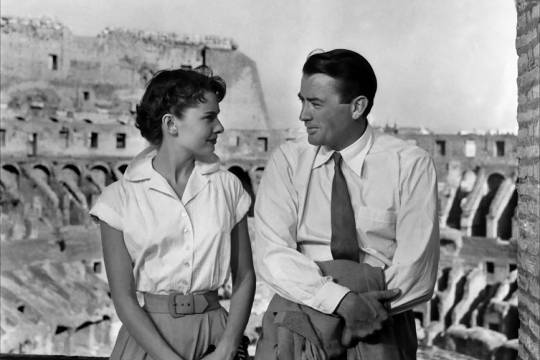
The perils of overly cozy media relationships can be very real. Learn when to walk away from a story.
September 1, 2020 4 min read
Opinions expressed by Entrepreneur contributors are their own.
Among my favorite films is Roman Holiday, an enduring classic and spiritual forerunner to today’s rom-coms, released this month in 1953. In the event you’re not familiar with it, Roman Holiday is the story of a royal who decides to be bad. Audrey Hepburn plays Princess Ann, a monarch from an unnamed, exotic country on a state visit to Rome who decides to sneak away and embark on a voyage of discovery in the Eternal City. Hepburn’s character even claims that her father is in public relations! But in fact, he’s royalty!
While out adventuring, she encounters Gregory Peck’s character, Joe Bradley, an American reporter. During their first encounter, Joe doesn’t recognize the princess, but after an unlikely and chaste night together, he soon does. As the morning headlines scream about a missing princess, Joe realizes that he has stumbled across the year’s biggest scoop. Instead of admitting that he is a reporter, Joe claims to be a fertilizer salesman, joining Hepburn’s character on a whirlwind romantic adventure around Rome. Much joy and adventure ensue.
Related: How to Pitch a Story to a Reporter Without Offending Them
In the event you haven’t seen the film, I will try not to spoil it entirely. But the hero journalist, having worked his way so close to the story under initially accidental and then utterly false pretenses, begins to have doubts about using fraudulent access to write a story that will advance his career. Joe Bradley’s character is joined by Eddie Albert, playing a sort of beatnik photographer, Irving Radovich, who is following the princess’s story as well as chasing a big payday, offering a devil’s advocate sort of perspective. And in a way, this set of circumstances is precisely why Roman Holiday is a metaphor for instances when public relations professionals – or even clients – and journalists become too close.
Reporters being too chummy with their subjects has long been an issue in journalistic and PR ethics. Such closeness can lead to unintended consequences. Facts can become blurred, and both parties’ desire for a favorable outcome, in most cases positive coverage, can mean that tough and fair reporting isn’t likely or even possible. Inaccuracies are often ignored, and “softball” coverage can occur in the name of loyalty. Or, the inverse happens, and negative news about a client can be published without corrections or any sort of forceful rebuttal from PR, because they’re hoping to preserve editorial relationships.
Related: 10 Ways to Get Global PR Exposure
However, there is simply a time to walk away, particularly when the relationship with the subject (or in the case of PR, the subject’s advocate) is going to cloud ethical waters or let key facts or other issues “slide.” This might include the passage of insider or confidential information between reporters and PR people. In many cases, even what seems like a positive story can do longer-term harm, including creating potential long-range consequences for valuation.
Knowing when to walk away from a story based on too much-shared information is a key skill for PR people. This is especially important given that many people who call themselves journalists these days are in fact, opinion writers and wannabe pundits. The integrity of these types is usually suspect, as are the media outlets that they work for.
Furthermore, not walking away from a potentially negative or controversial story can have the effect of lumping a client in a group with unsavory other subjects, creating unpleasant comparisons across the marketplace and tarnishing a firm’s brand image. It is also acceptable to walk away from stories that take up too many company or agency resources or stories that move forward even when the reporter has the wrong premise. It is also highly acceptable to walk away when the story goes against company values and/or hurts client allies.
Related: Kylie Jenner’s Removal from Forbes’ Billionaires List Underscores the Basic Rules of PR
In case you’re itching to know what happens in the film, Gregory Peck’s character does choose the honorable path and sacrifices a large payday in the name of romance and honor. Stoically, his character leaves the big scoop unpublished, ultimately assuring the princess that no negative coverage will come as a result of their “Roman holiday” together, and they part ways.
His honorable act in the film echoes the sort of ethics and good judgment that PR people should practice when it comes to overly-cozy relationships with the press and deciding whether or not to walk away from a story.
loading…

Website Design & SEO Delray Beach by DBL07.co
Delray Beach SEO
source http://www.scpie.org/pr-ethics-lessons-from-roman-holiday/
source https://scpie1.blogspot.com/2020/09/pr-ethics-lessons-from-roman-holiday.html
0 notes
Text
2017 Movie Odyssey Awards
For all my followers out there, I have two final posts left for this year’s Movie Odyssey. This is the penultimate one and the second-most important of all: the awards ceremony. Based on 230+ feature- and short-films that I saw this year for the first time in their entirety, here is an Oscar-like ceremony celebrating twenty-six categories of filmmaking completed over a hundred years. The ten best motion pictures of the year that I saw this year lead us off.
Thanks again for everyone’s support. A Happy New Year to you and your loved ones, and the full list for the 2017 Movie Odyssey will be out at around 8 PM Pacific!
Best Pictures (I'm naming ten, I'm not distinguishing one above the other nine)
A Brighter Summer Day (1991, Taiwan)
Captain Blood (1935)
Friendly Persuasion (1956)
In the Mood for Love (2000, Hong Kong)
The Lady Vanishes (1938)
Lonely Are the Brave (1962)
A Man There Was (1917, Sweden)
Sweet Smell of Success (1957)
Tokyo Twilight (1957, Japan)
A Touch of Zen (1971, Taiwan)
In the Mood for Love, The Lady Vanishes, Sweet Smell of Success, Tokyo Twilight, and A Touch of Zen received 10/10 ratings. All others received 9.5/10.
Best Comedy
Blackbeard’s Ghost (1968)
Destry Rides Again (1939)
Dr. Jack (1922)
The Great Muppet Caper (1981)
Kung Fu Hustle (2004, Hong Kong/China)
Mr. & Mrs. ’55 (1955, India)
Much Ado About Nothing (1993)
Porco Rosso (1992, Japan)
The Sandlot (1993)
Yoyo (1965, France)
Hey, I’m just looking for the movie that made me laugh the most here.
Best Musical
Coco (2017)
Funny Face (1957)
The Great Muppet Caper
It’s Always Fair Weather (1955)
Kid Galahad (1962)
Mr. & Mrs. ‘55
Nashville (1975)
Pink Floyd – The Wall (1982)
Take Me Out to the Ball Game (1949)
You Were Never Lovelier (1942)
It’s not a fully original musical, but it contains some of the best arrangement of George and Ira Gershwin music you could find. You Were Never Lovelier and Mr. & Mrs. ‘55 and It’s Always Fair Weather also threatened here.
Best Animated Feature
The Breadwinner (2017)
Castle in the Sky (1986, Japan)
Fantastic Planet (1973, France/Czechoslovakia)
My Life as a Zucchini (2016, Switzerland)
My Neighbor Totoro (1988, Japan)
Ponyo (2008, Japan)
Porco Rosso
The Red Turtle (2016, France/Belgium/Japan)
Your Name (2016, Japan)
A much stronger year for animation this year than the previous Movie Odyssey. Fantastic competition, with what I think is a great winner.
Best Documentary
Don’t Look Back (1967)
The Horse with the Flying Tale (1960)
Jungle Cat (1959)
Life, Animated (2016)
Monterey Pop (1968)
The Statue of Liberty (1985)
Swim Team (2016)
The Tattooed Police Horse (1964)
Tyrus (2015)
Best Non-English Language Film
Aguirre, the Wrath of God (1972), West Germany
A Brighter Summer Day, Taiwan
Charulata (1964), India
In the Mood for Love, Hong Kong
My Life as a Zucchini, Switzerland
My Neighbor Totoro, Japan
The Salesman (2016), Iran
Sound of the Mountain (1954), Japan
Tokyo Twilight, Japan
A Touch of Zen, Taiwan
Best Silent Film
Camille (1921)
Dr. Jack
Ducks and Drakes (1921)
The Last of the Mohicans (1920)
A Man There Was
Now or Never (1921 short)
Sparrows (1926)
Strike (1925, Soviet Union)
Tokyo Chorus (1931, Japan)
West of Zanzibar (1928)
Personal Favorite Film
Akeelah and the Bee (2006)
Coco
Destry Rides Again
The Goonies (1985)
The Great Muppet Caper
Lady Bird (2017)
The Lady Vanishes
Lonely Are the Brave
My Life as a Zucchini
Pollyanna (1960)
It might be one of the best neo-Westerns I have ever seen. Kirk Douglas said it was his personal favorite movie, and it’s obvious and you can see why.
Best Director
Michael Curtiz, Captain Blood
Stanley Donen, Funny Face
Alfred Hitchcock, The Lady Vanishes
King Hu, A Touch of Zen
Rex Ingram, The Four Horsemen of the Apocalypse
Alexander Mackendrick, Sweet Smell of Success
Jean Renoir, The Southerner (1945)
Victor Sjöström, A Man There Was
Wong Kar-wai, In the Mood for Love
Edward Yang, A Brighter Summer Day
Holy hell this is a strong field. I desperately wanted to find an excuse to put in Greta Gerwig as Best Director for Lady Bird, but I never found it. Congrats to Hitchcock, for may be the best-directed work I’ve seen from him.
Best Acting Ensemble
A Brighter Summer Day
Caged (1950)
Fences (2016)
Friendly Persuasion
Pollyanna
Road to Perdition (2002)
Sense and Sensibility (1995)
Sound of the Mountain
Sweet Smell of Success
Tokyo Twilight
Now, none of the actors from Fences are going to win an individual award as you seen down below. But together, they were outstanding and surpassed all comers this year.
Best Actor
Gary Cooper, Friendly Persuasion
Tony Curtis, Sweet Smell of Success
Kirk Douglas, Lonely Are the Brave
Charles Laughton, Island of Lost Souls (1932)
Gregory Peck, Twelve O’Clock High (1949)
Edward G. Robinson, Scarlet Street (1945)
Andy Serkis, War for the Planet of the Apes (2017)
Victor Sjöström, A Man There Was
Denzel Washington, Fences
Robin Williams, What Dreams May Come (1998)
I’ve already commented how brilliant Douglas is here. Also in prime contention were Robinson, Serkis, and, yes, Robin Williams.
Best Actress
Ineko Arima, Tokyo Twilight
Leslie Caron, Lili (1953)
Maggie Cheung, In the Mood for Love
Viola Davis, Fences
Olivia de Havilland, Captain Blood
Chôko Iida, Record of a Tenement Gentleman (1947, Japan)
Dorothy McGuire, Friendly Persuasion
Madhabi Mukherjee, Charulata
Eleanor Parker, Caged
Mary Pickford, Sparrows
As a lonely wife, Mukherjee does so much with so little dialogue. You almost wonder if she could have excelled in silent film, too. Cheung, de Havilland, and Iida were also considered the strongest contenders here.
Best Supporting Actor
Dan Duryea, Scarlet Street
Henry Gibson, Nashville
Stephen Henderson, Fences
Burt Lancaster, Sweet Smell of Success
Paul Newman, Road to Perdition
Anthony Perkins, Friendly Persuasion
Alan Rickman, Sense and Sensibility
Patrick Stewart, Logan (2017)
Gustav von Seyffertitz, Sparrows
Mykelti Williamson, Fences
Supporting categories love a villain. And as the immoral columnist J.J. Hunsecker, Burt Lancaster commands Sweet Smell of Success whenever he is on screen. A terrific performance.
Best Supporting Actress
Ronee Blakley, Nashville
Hope Emerson, Caged
Elsa Lanchester, The Big Clock (1948)
Charlotte Mineau, Sparrows
Agnes Moorehead, Caged
Kay Thompson, Funny Face
Lily Tomlin, Nashville
Michelle Williams, Manchester by the Sea (2016)
May Whitty, The Lady Vanishes
Kate Winslet, Sense and Sensibility
I’m usually not kind to comedic performances, but I have to give it to Kay Thompson here. She was ebullient and heavens-to-goodness hilarious in Funny Face. A great singing voice, too.
Best Adapted Screenplay
James Bernard, Roy Boulting, Paul Dehn, and Frank Harvey, Seven Days to Noon (1950)
Kenneth Branagh, Much Ado About Nothing
Sidney Gilliat and Frank Launder, The Lady Vanishes
Yasunari Kawabata and Yôko Mizuki, Sound of the Mountain
Al Morgan and José Ferrer, The Great Man (1956)
Clifford Odets and Ernest Lehman, Sweet Smell of Success
Satyajit Ray, Charulata
Bernard C. Schoenfeld and Virginia Kellogg, Caged
Céline Sciamma, Claude Barras, Germano Zullo, and Morgan Navarro, My Life as a Zucchini
Michael Wilson, Friendly Persuasion
Best Original Screenplay
Sean Baker and Chris Bergoch, The Florida Project (2017)
Guillermo del Toro and Vanessa Taylor, The Shape of Water (2017)
Asghar Farhadi, The Salesman
Greta Gerwig, Lady Bird
Tadao Ikeda and Yasujirô Ozu, Record of a Tenement Gentleman
Frances Marion, Joe Farnham, and Martin Flavin, The Big House (1930)
Yasujirô Ozu and Kôgo Noda, Tokyo Twilight
William A. Wellman, Robert Carson, Dorothy Parker, and Alan Campbell, A Star Is Born (1937)
Wong Kar-wai, In the Mood for Love
Edward Yang, Hung Hung, Alex Yang, and Mingtang Lai, A Brighter Summer Day
Best Cinematography
Hoyte van Hoytema, Dunkirk (2017)
William H. Daniels, The Far Country (1954)
John F. Seitz, The Four Horsemen of the Apocalypse
Ray June, Funny Face
Christopher Doyle and Mark Lee Ping Bin, In the Mood for Love
Karl Struss, Island of Lost Souls
Julius Jaenzon, A Man There Was
Conrad Hall, Road to Perdition
James Wong Howe, Sweet Smell of Success
Hua Hui-ying, A Touch of Zen
Best Film Editing
Lee Smith, Dunkirk
Frank Bracht, Funny Face
Norman R. Palmer, The Incredible Journey (1963)
William Chang, In the Mood for Love
R.E. Dearing, The Lady Vanishes
Gene Havlick and Gene Milford, Lost Horizon (1937)
Ray Boulting and John Boulting, Seven Days to Noon
King Hu and Wing Chin-chen, A Touch of Zen
Tom Held, San Francisco (1936)
Henri Lanoë, Yoyo
Best Adaptation or Musical Score
Richard Baskin, Nashville
Adolph Deutsch, Funny Face
Adolph Deutsch, Take Me Out to the Ball Game
Bob Dylan, Pat Garrett and Billy the Kid (1973)
Leigh Harline, You Were Never Lovelier
O.P. Nayyar, Mr. & Mrs. ‘55
Alfred Newman and Lionel Newman, There’s No Business Like Show Business
André Previn, It’s Always Fair Weather
Joe Raposo, The Great Muppet Caper
Richard M. Sherman, Robert B. Sherman, and Buddy Baker, Summer Magic (1963)
This comes to the strength of the entire adaptation or musical score, not just the best songs. As a whole, I felt like It’s Always Fair Weather had the most going for it compared to the other seen here. I didn’t care for Baskin’s or Dylan’s work outside of a single song from each. Funny Face, Mr. & Mrs. ‘55, and There’s No Business Like Show Business were next in line.
Best Original Score
David Arnold, Independence Day (1996)
Elmer Bernstein, Sweet Smell of Success
Alexandre Desplat, Valerian and the City of a Thousand Planets (2017)
Patrick Doyle, Sense and Sensibility
Jerry Goldsmith, MacArthur (1977)
Joe Hisaishi, Castle in the Sky
Erich Wolfgang Korngold, Captain Blood
Thomas Newman, Road to Perdition
Dimitri Tiomkin, Friendly Persuasion
John Williams, Star Wars: The Last Jedi (2017)
Tiomkin has never won yet, but now one of my favorite movie composers has finally triumphed in this category with a gorgeous, lush score that swats away close competition from Independence Day, Castle in the Sky, and Captain Blood.
Best Original Song
“Blue Gardenia”, music and lyrics by Bob Russell and Lester Lee, arranged by Nelson Riddle, The Blue Gardenia (1953)
“Bonjour, Paris!”, music and lyrics by Roger Edens and Leonard Gershe, Funny Face
“I Like Myself”, music by André Previn, lyrics by Betty Comden and Adolph Green, It’s Always Fair Weather
“I’m Easy”, music and lyrics by Keith Carradine, Nashville
“Knockin’ on Heaven’s Door”, music and lyrics by Bob Dylan, Pat Garrett and Billy the Kid
“My Neighbor Totoro”, music by Joe Hisaishi, lyrics by Hayao Miyazaki, My Neighbor Totoro
“No Wrong Way Home”, music by Alexis Harte and J.J. Weisler, lyrics by Alexis Harte, Pearl (2016 short film)
“Remember Me (Recuérdame)”, music and lyrics by Robert Lopez and Kristen Anderson-Lopez, Coco
“San Francisco (Be Sure to Wear Flowers in Your Hair)”, music and lyrics by John Phillips, Monterey Pop
“Zenzenzense”, music and lyrics by Yôjirô Noda, Your Name
Thanks again to all those who participated!
Best Costume Design
Milo Anderson, Captain Blood
Edith Head and Hubert de Givenchy, Funny Face
Dorothy Jeakins, My Cousin Rachel (1952)
Walter Plunkett, Pollyanna
Adrian, San Francisco
Jenny Beavan and John Bright, Sense and Sensibility
Leo Bei, Gerdago, and Franz Szivats, Sissi (1955, Austria)
Leo Bei, Gerdago, and Franz Szivats, Sissi: The Young Empress (1956, Austria)
Charles LeMaire, Travilla, and Miles White, There’s No Business Like Show Business
Li Chia-Chih, A Touch of Zen
Best Makeup and Hairstyling
Roy Ashton and Frieda Steiger, Brides of Dracula (1960)
Tom Savini, Taso N. Stavrakis, Katharine Vickers, and Cecilia Verardi, Friday the 13th (1980)
Charles Gemora and Wally Westmore, Island of Lost Souls
Sarah Craig and Stephanie Ingram, It (2017)
Uncredited, Jigoku (1960, Japan)
Jordan Samuel and Paula Fleet, The Shape of Water
Fritz Jelinek, Jupp Paschke, and Heinz Stamm, Sissi
Uncredited, The Southerner
Uncredited, Sparrows
Thi Thanh Tu Nguyen and Félix Puget, Valerian and the City of a Thousand Planets
Best Production Design
Anton Grot, Captain Blood
Joseph Calder and Amos Myers, The Four Horsemen of the Apocalypse
J. Michael Riva and Rick Carter, The Goonies
Stephen Goosson and Babs Johnstone, Lost Horizon
Carroll Clark, Robert Clatworthy, Emile Kuri, and Fred M. MacLean, Pollyanna
Cedric Gibbons, San Francisco
Fritz Jüptner-Jonstorff, Sissi: Fateful Years of an Empress (1957, Austria)
Fritz Jüptner-Jonstorff, Sissi: The Young Empress
Chen Shang-Lin, A Touch of Zen
Eugenio Zanetti and Cindy Carr, What Dreams May Come
Achievement in Visual Effects (all films nominated here are winners because it’s unfair to have a 1930s film with groundbreaking visual effects compete with a 2010s film)
Captain Blood
Dawn of the Planet of the Apes
Dunkirk
Independence Day
Kong: Skull Island (2017)
Lost Horizon
San Francisco
Star Wars: The Last Jedi
Tom Thumb (1958)
Tremors (1990)
Valerian and the City of a Thousand Planets
War for the Planet of the Apes
What Dreams May Come
Worst Picture
Ben (1972)
Beyond the Poseidon Adventure (1979)
Dr. Goldfoot and the Bikini Machine (1965)
Friday the 13th
The Happening (2008)
Independence Day: Resurgence (2016)
Olaf’s Frozen Adventure (2017 short)
Return of the Fly (1959)
Willard (1971)
The X from Outer Space (1967, Japan)
OH GOD WHY
HONORARY AWARDS
Five Came Back (TV series), for illustrating the history of WWII experiences through the prism of Hollywood
Loving Vincent (2017), for giving new meaning to the phrase “every frame a painting” – an international artistic triumph
National Film Board of Canada (NFB), for decades of delights and invention in its animated short films
June Foray (posthumously), for a long, accomplished career that made her one of the greatest voice actresses in film history
Pearl, for innovative use of virtual reality in animated filmmaking
Robert Osborne (posthumously), for many years of introducing classic movies on TCM – a calming, erudite presence to his fans and a hero to this blogger
Jack Shaheen (posthumously), for his tireless research spotlighting and critiquing portrayals of Arabs and Muslims in cinema
Tyrus Wong (posthumously), for his impactful artistry long overlooked – one of the greatest artists that ever worked in Hollywood
FILMS WITH MULTIPLE NOMINATIONS (61... excluding Worst Picture)
Eight: Funny Face; Sweet Smell of Success
Seven: Captain Blood; Friendly Persuasion; In the Mood for Love
Six: The Lady Vanishes; Nashville
Five: A Brighter Summer Day; Fences; A Man There Was; Sense and Sensibility; Sparrows; Tokyo Twilight; A Touch of Zen
Four: Caged; The Four Horsemen of the Apocalypse; The Great Muppet Caper; Lonely Are the Brave; My Life as a Zucchini; Pollyanna; Road to Perdition; San Francisco
Three: Charulata; Coco; Dunkirk; Independence Day; Island of Lost Souls; It’s Always Fair Weather; Lost Horizon; Mr. & Mrs. ‘55; My Life as a Zucchini; My Neighbor Totoro; Sound of the Mountain; There’s No Business Like Show Business; Valerian and the City of a Thousand Planets; What Dreams May Come
Two: Aguirre, the Wrath of God; The Big House; Castle in the Sky; Destry Rides Again; Dr. Jack; The Goonies; Lady Bird; Monterey Pop; Much Ado About Nothing; Pat Garrett and Billy the Kid; Porco Rosso; Record of a Tenement Gentleman; The Salesman; Scarlet Street; Seven Days to Noon; The Shape of Water; Sissi; Sissi: The Young Empress; Sound of the Mountain; The Southerner; Star Wars: The Last Jedi; Take Me Out to the Ball Game; War for the Planet of the Apes; You Were Never Lovelier; Your Name; Yoyo
WINNERS (excluding honorary awards and Worst Picture... 31)
3 wins: In the Mood for Love; Lonely Are the Brave; Sweet Smell of Success
2 wins: Captain Blood; Dunkirk; Friendly Persuasion; Funny Face; The Lady Vanishes; A Man There Was; Valerian and the City of a Thousand Planets; What Dreams May Come
1 win: Blackbeard’s Ghost; A Brighter Summer Day; Charulata; Coco; Dawn of the Planet of the Apes; Fences; Independence Day; It’s Always Fair Weather; Kong: Skull Island; Lost Horizon; Monterey Pop; The Red Turtle; Road to Perdition; San Francisco; Sissi; Star Wars: The Last Jedi; Tokyo Twilight; Tom Thumb; Tremors; War for the Planet of the Apes
111 films were nominated in 26 categories.
9 notes
·
View notes
Text
GEORGE BURNS
January 20, 1896

George Burns was born Nathan Birnbaum on January 20, 1896 in New York City, the ninth of 12 children born to Jewish immigrants from Poland. He was one of the few entertainers whose career successfully spanned vaudeville, radio, film, and television. His arched eyebrow and cigar-smoke punctuation became familiar trademarks for over three-quarters of a century.
He got started in show business with the Pee-Wee Quartet singing on ferryboats, in saloons, in brothels, and on street corners. He formed a vaudeville act specializing in comedy, songs and dances with his first wife, Hannah Siegel. The marriage lasted twenty-six weeks. Burns' second wife and famous partner in their entertainment routines was Gracie Allen.
“I remember looking down at her, looking right into her green eye and her blue eye, and thinking what a pretty little girl she is. I was hoping she'd work with me.” ~ George Burns

The pair had great success on radio and translated that success to film with a series of shorts for Vitaphone. The first was “Lambchops” in 1929.

Their first foray into television brought their radio show to the small screen with “The George Burns and Gracie Allen Show” (1950-58) completing 292 episodes on CBS TV, running concurrently with “I Love Lucy.” The show co-starred Bea Benadaret, who had played Iris Atterbury on Lucille Ball’s radio show “My Favorite Husband.” Lucy and Desi offered her the role of Ethel Mertz, but Benadaret had already committed to Burns and Allen, so could only manage a single appearance, as Miss Lewis in “Lucy Plays Cupid.”

In November 1952, George Burns and Lucille Ball appeared on the same show with “Stars in the Eye” a special celebrating the opening of CBS’s Television City. The two did not share any scenes together.
Lucy and George also appeared on the same bill for two television birthday shows: “The Jackie Gleason Show: At 65” (1957) and “A Tribute to Eleanor Roosevelt on Her Diamond Jubilee” (1959).
In August 1964 Burns’ life was shaken when Gracie Allen died of a heart attack at age 64.

Lucille Ball opened the fifth season of “The Lucy Show” with a guest appearance by George Burns, playing himself. Burns wants to open an account at the bank, if Lucy will do an act with him!

On March 20, 1968, George Burns did a one-line cameo in “Jack Benny’s Carnival Nights” a special which also featured Lucille Ball, although the two did not share the screen. Burns played Martine the Bearded Lady. He says that Mary [Livingstone, Jack’s wife] was supposed to do it, but he is Jack’s best friend. He corrects himself: was his best friend.
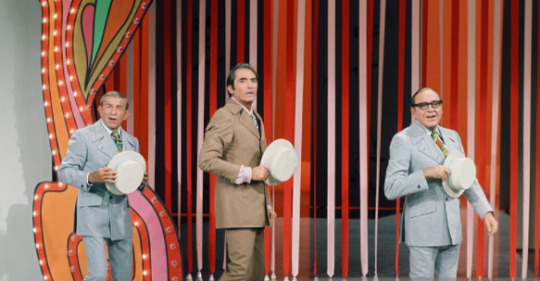
In “Jack Benny’s New Look” (1969), the roles were reversed and it was Lucille Ball who did the uncredited cameo, with Burns joining Benny and Gregory Peck (center) in a song and dance routine.

In addition, the two were also billed together (though did not interact) in the documentary film All About People (1967) and “The Dean Martin Christmas Special” (1968).

In November 16, 1970, Lucy and George joined “The Bob Hope Show: Bringing Back Vaudeville” on NBC.

A week later, Burns will did a cameo appearance on “Here’s Lucy”. Burns is only on screen for a minute in an episode that concentrates on guest star (and Burns’ pal) Jack Benny.

And the week after that, they both (again without sharing any screen time) appeared on “Swing Out Sweet Land”, a patriotic special in which Ball voiced The Statue of Liberty and Burns did a cameo as himself.

George, Lucy, and Carol Burnett were all in the interview chair on a February 23, 1971 installment of “The David Frost Show.”

In March, Burns and Ball were back with Benny on “Everything You Wanted to Know About Jack Benny But Were Afraid to Ask” aired March 10, 1971. Lucy plays a young starlet who climbs to the top of the show business food chain. Burns and Benny track their friendship began - although it is highly fictionalized!

On “Circus of The Stars II” Lucille Ball was the ringmaster and George Burns performed magic, although once again, they were never on screen at the same time.

Ball and Burns finally sat down together on screen in “CBS: On The Air” a celebration of fifty years of the network on March 26 & 27, 1978.
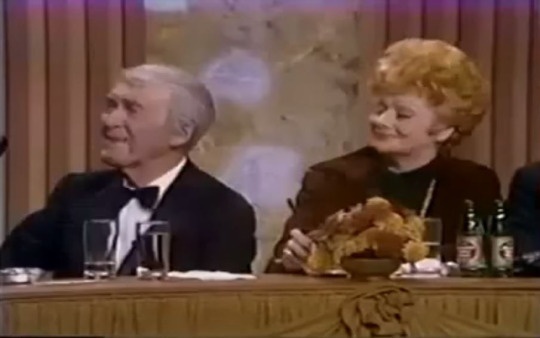
On May 10, 1978, Ball and Burns took the dais for “The Dean Martin Celebrity Roast: Jimmy Stewart”.

For the next ten years, George Burns an Lucille Ball appeared together (but not always together) on various Bob Hope specials, and tribute show, including
“Happy Birthday, Bob” (1978)
“Bob Hope's 30th Anniversary Special” (1981)
“Bob Hope's Road to Hollywood” (1983)
“Happy Birthday, Bob!” (1983)
“Bob Hope's Who Makes the World Laugh? Part II” (1984)
“Bob Hope's Unrehearsed Antics of the Stars” (1984)
“Bob Hope Buys NBC?” (1985)
“America's Tribute to Bob Hope” (1988)
“Happy Birthday, Bob: 50 Stars Salute 50 Years with NBC” (1988)

In 1976 George burns career had a re-birth when he won an Oscar for playing one of The Sunshine Boys. He was also introduced to a new generation playing the title role in Oh, God! (1978) and its 1984 sequel Oh, God! You Devil.
He died at the age of 100.
“If you live to the age of 100, you have it made, because very few people die past the age of 100.” ~ George Burns

4 notes
·
View notes
Text
Latest Hollywood Movies
Some people feel that there are few real Hollywood classics made these days. While this is not necessarily true, they seem a little harder to find. Today's advanced technology has certainly made films that are visually very attractive, but many of the stories are simply copies or modified versions of originals. One of the most attractive factors in the composition of the old cinema classics is the fact that many of them were really 'original'. Checkout the overlord season 4 release date.
Here are some suggestions for Best Hollywood Movies and classics (there are many more) that should be seen by all fans of movies who have missed them, and for those who would love to see them again.
What Started the Wind was launched in 1939, directed by Victor Fleming and is a classic of epic proportions. A filmization of Margaret Mitchell's 1936 novel starred in some of the most important names in film history. Clark Gable, Vivien Leigh, Leslie Howard and Olivia de Havilland helped bolster Bone with the wind at 10 Academy Awards. He has sold more tickets in the United States than any other movie in history. On the 2007 AFI list of the top 100 American films of all time, it ranks number 6 and is considered one of the most enduring symbols of the Golden Age of Hollywood.
Launched in 1942, the unforgettable and timeless Casablanca has enjoyed increasing popularity every year since its launch. With a strong international cast directed by Humphrey Bogart (in his first romantic role), Swedish actor Ingrid Bergman, Austrian actor Paul Henreid, English actor Claude Rains, German actor Conrad Veidt, English actor Sydney Greenstreet and Hungarian actor Peter Lorre; The film is set in the Moroccan city of Casablanca with World War II as the backdrop. A story of love and loyalty, the movie, its characters, quotes and music has Film acting Jobs in Hollywood.
The Philadelphia Story of 1940 is another "essential" Hollywood classic. A romantic comedy (based on real social life Helen Hope Montgomery Scott) about a future boyfriend whose plans suddenly become very complicated. Starring Katharine Hepburn, once labeled "box office poison" because of the failure of some previous films, Cary Grant and James Stewart. This film was a huge success and is ranked number 44 on the list of the top 100 films by the American Film Institute and number 15 on the list of top 100 comedies.
In 1953, Roman Holiday provided yet another romantic comedy/drama directed and produced by William Wyler. Roman Holiday introduced American viewers to Audrey Hepburn, whose popularity rose with her Oscar-winning performance. The film also starred Gregory Peck and Eddie Albert. This is a charming romantic comedy/drama by a princess who is too protected on a widely publicized tour of European capitals meeting an American journalist stationed in Rome.
#best hollywood movies#hollywood movies#overlord season 4 release date#overlord season 4#overlord 4#overlord anime season 4#overlord anime season 4 release date
0 notes